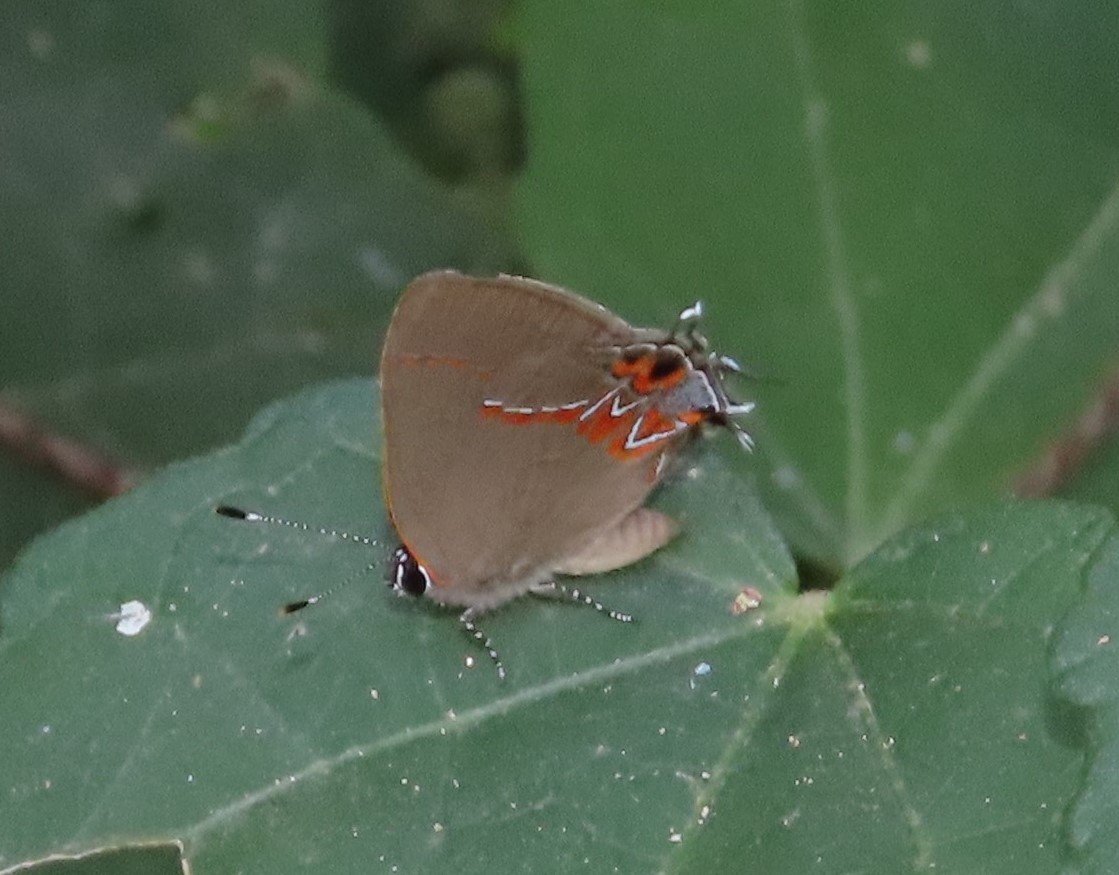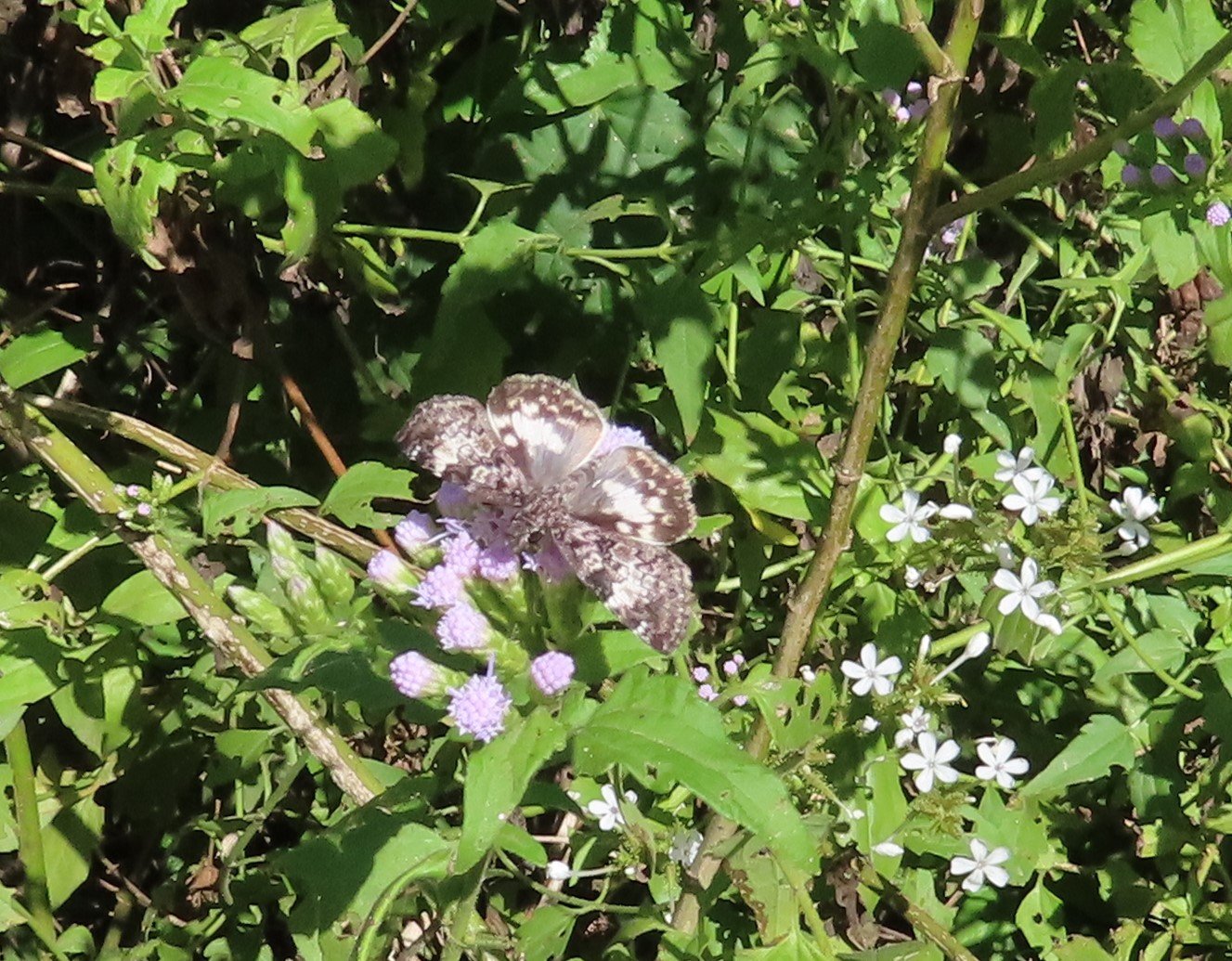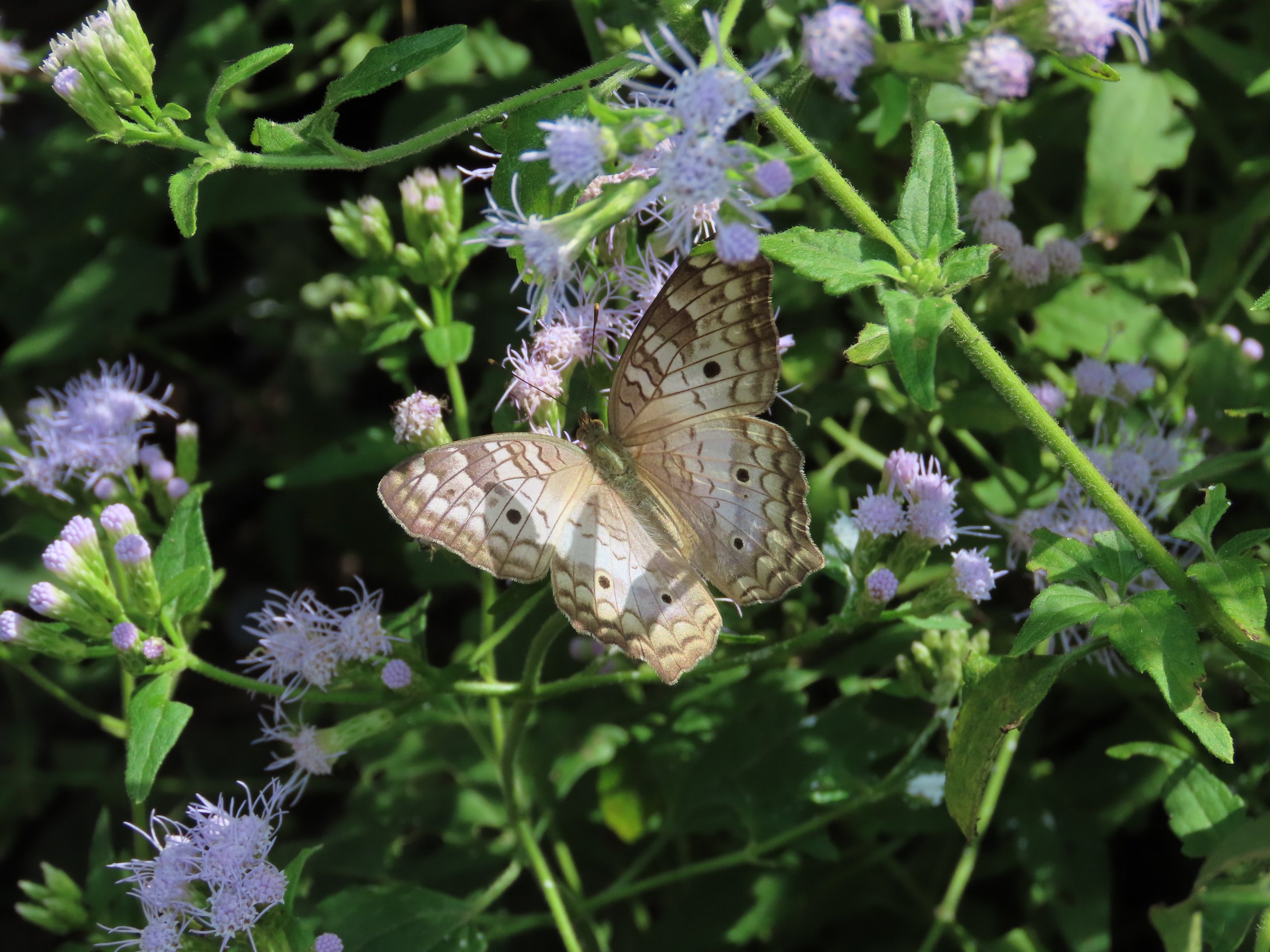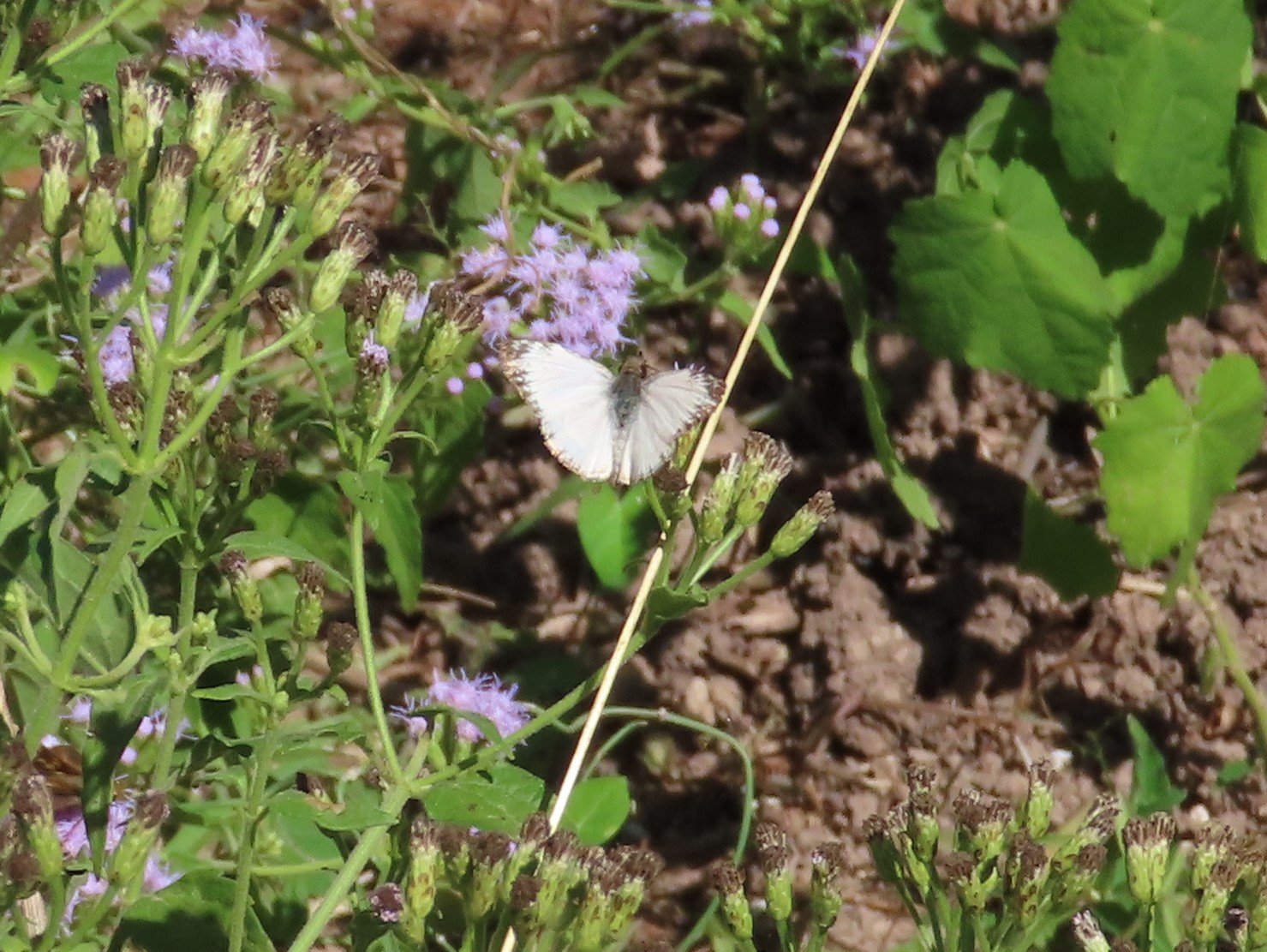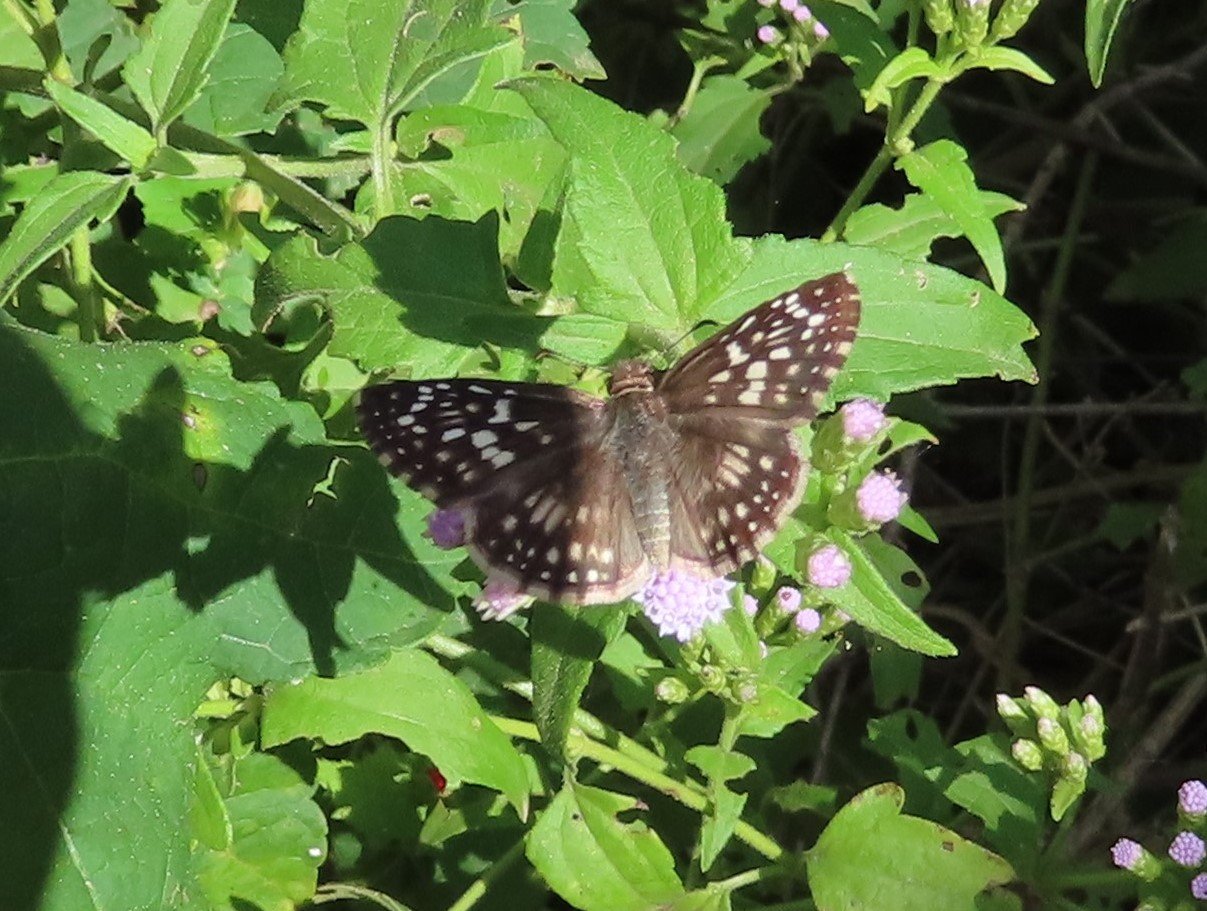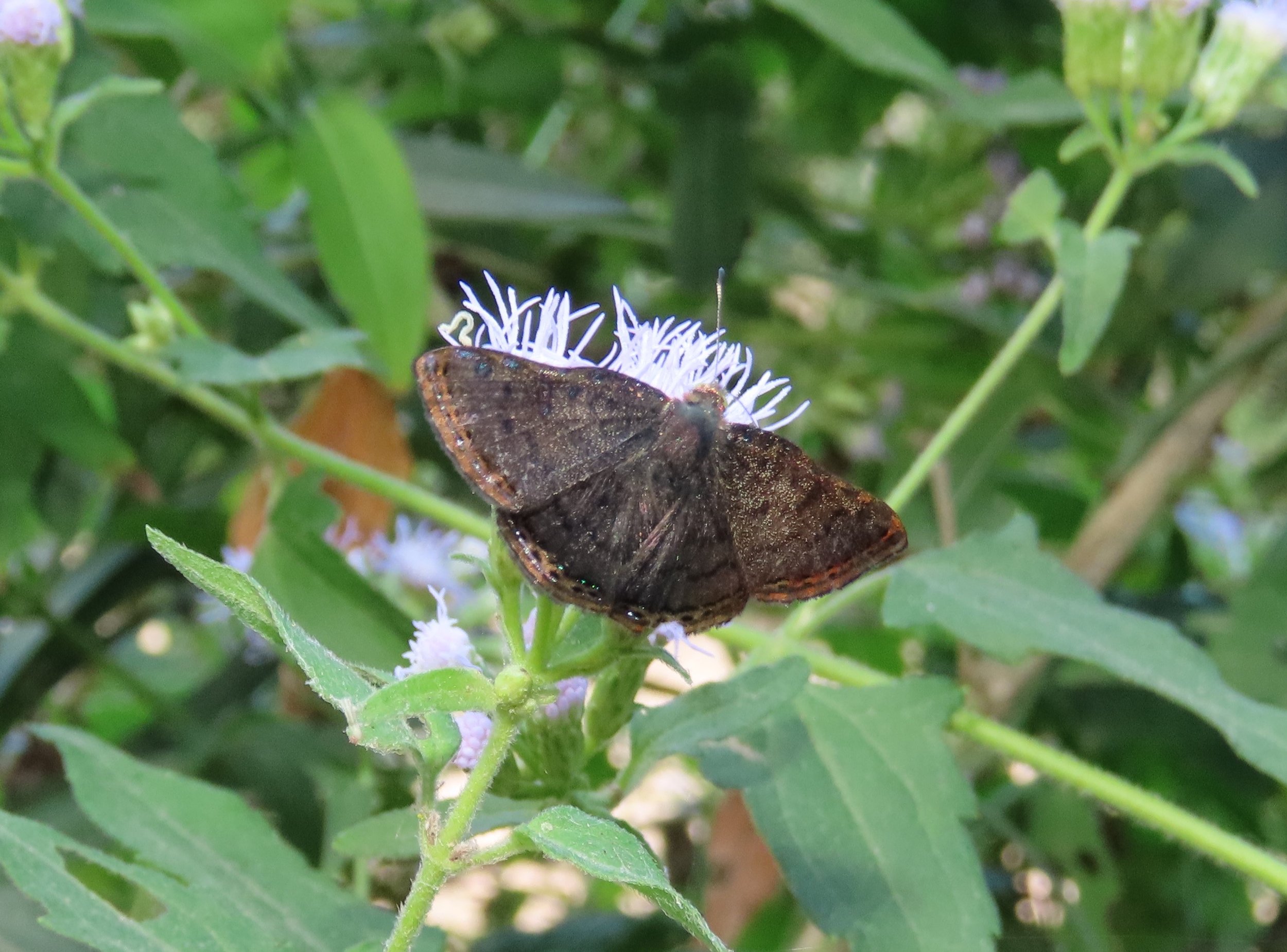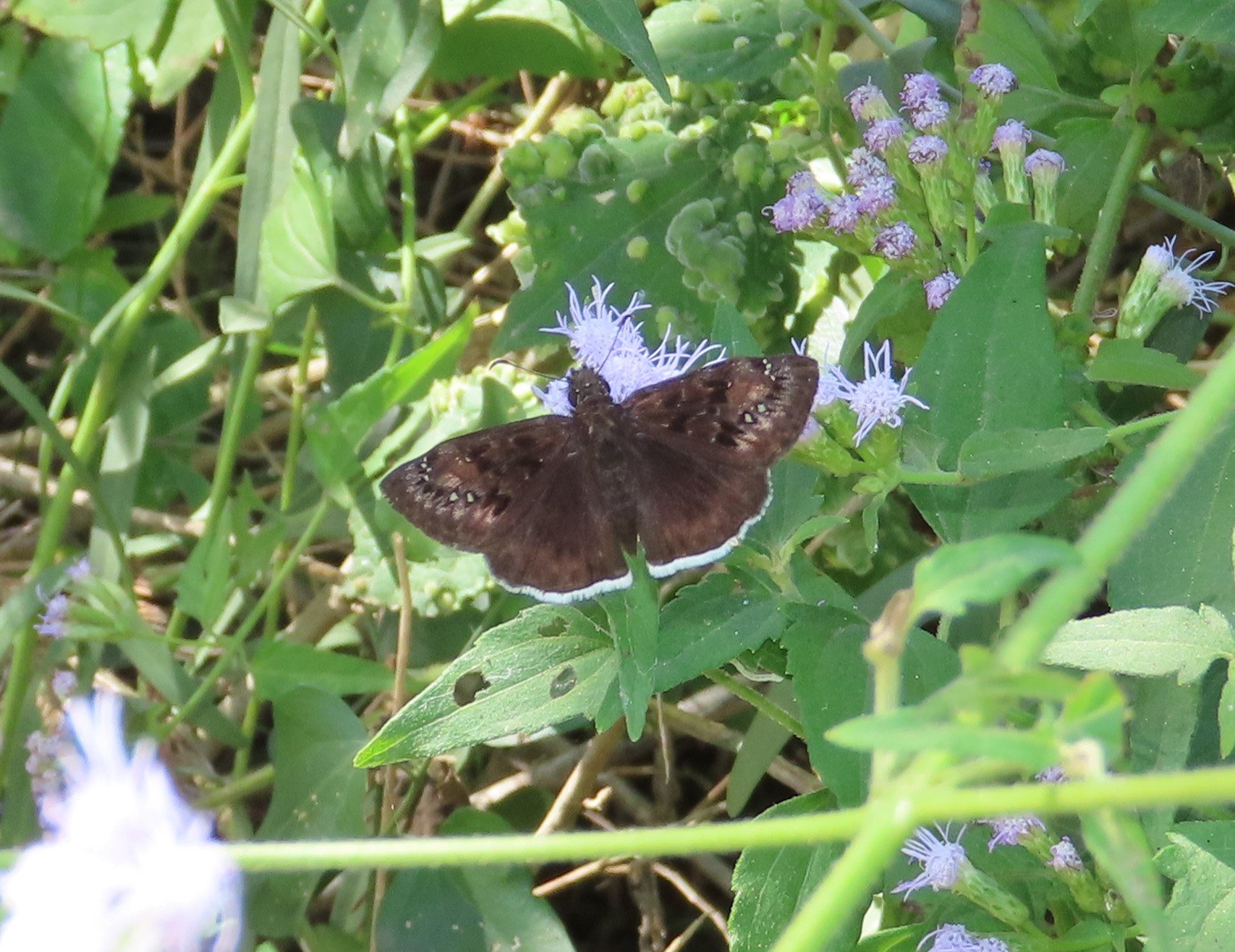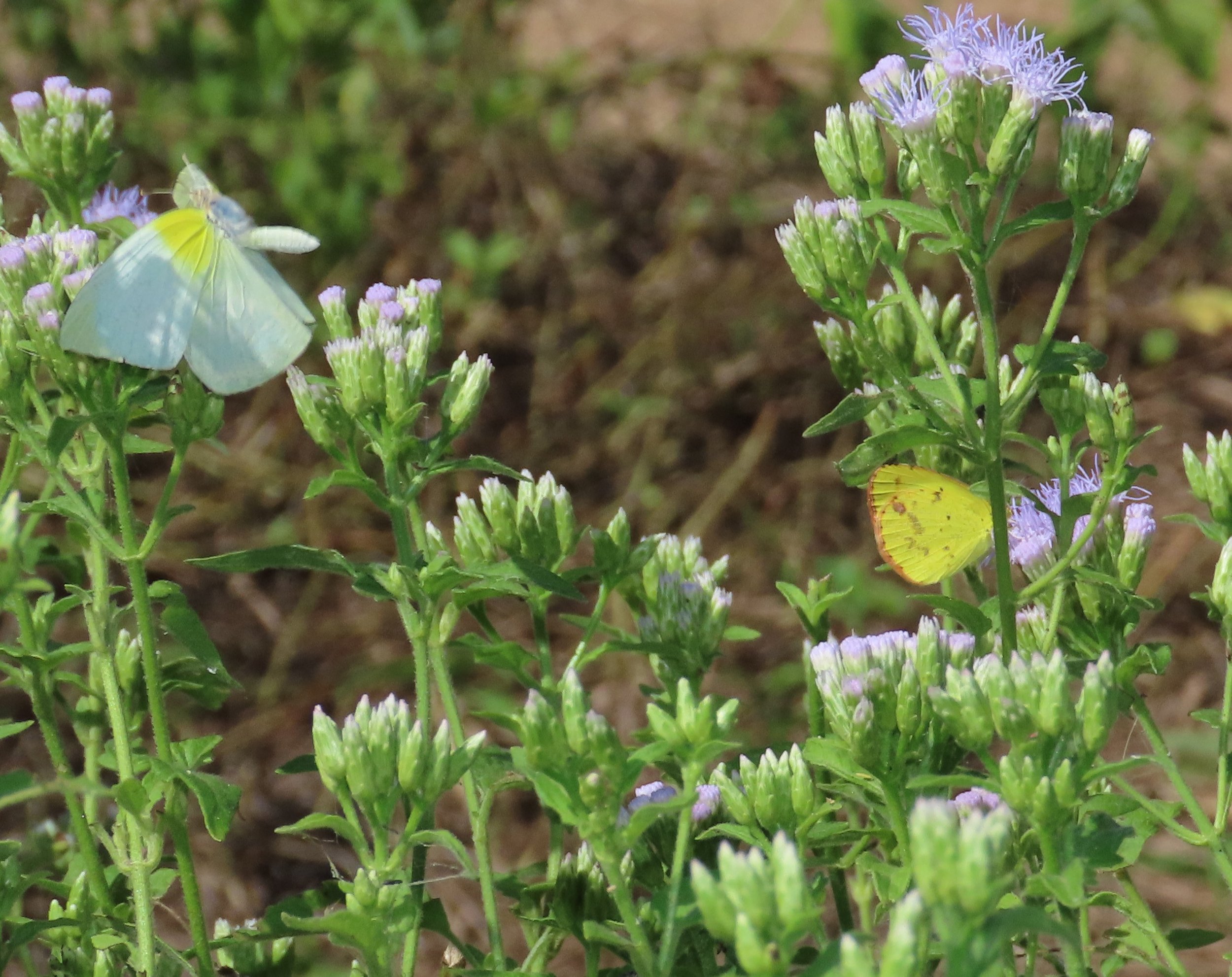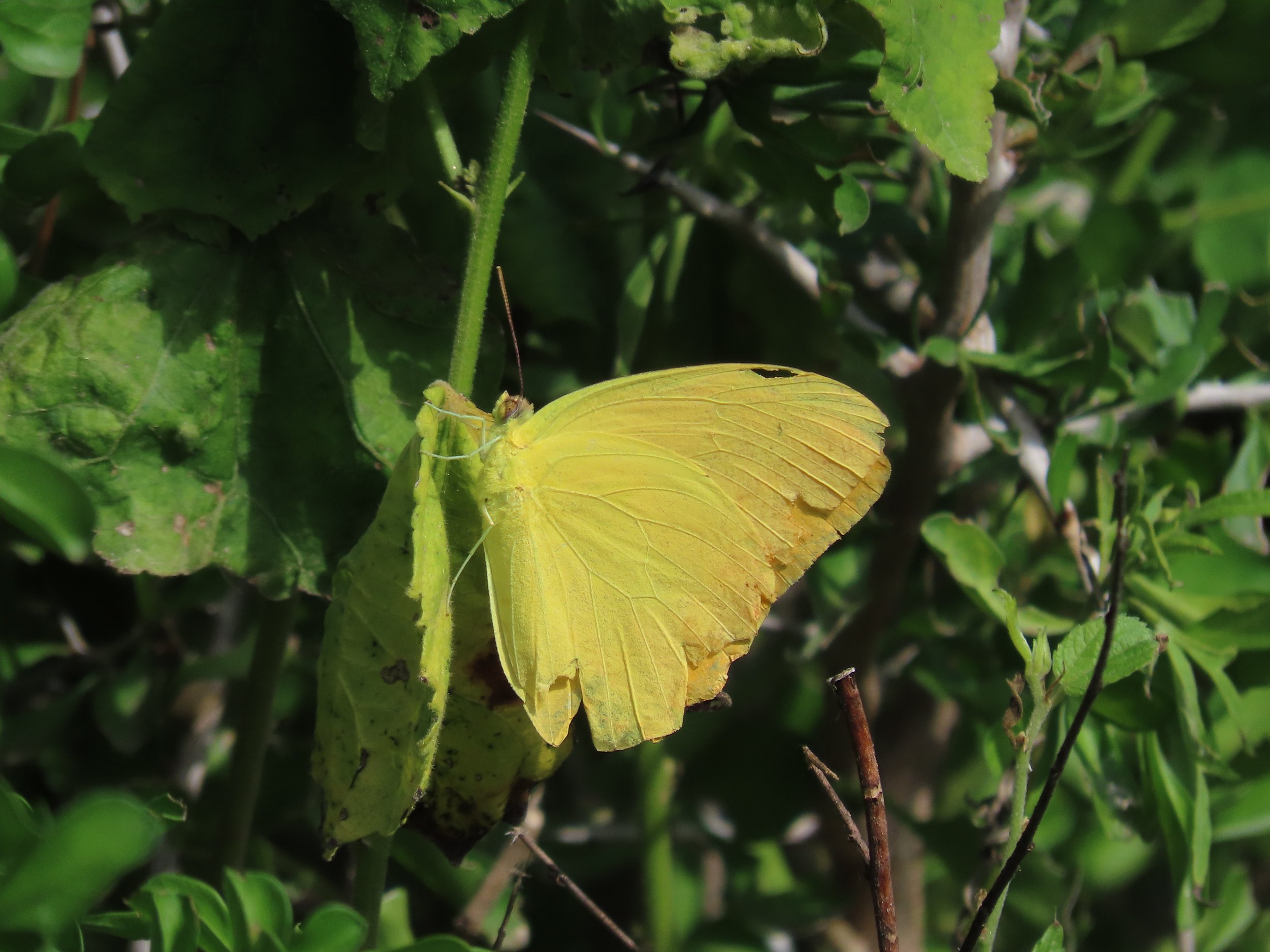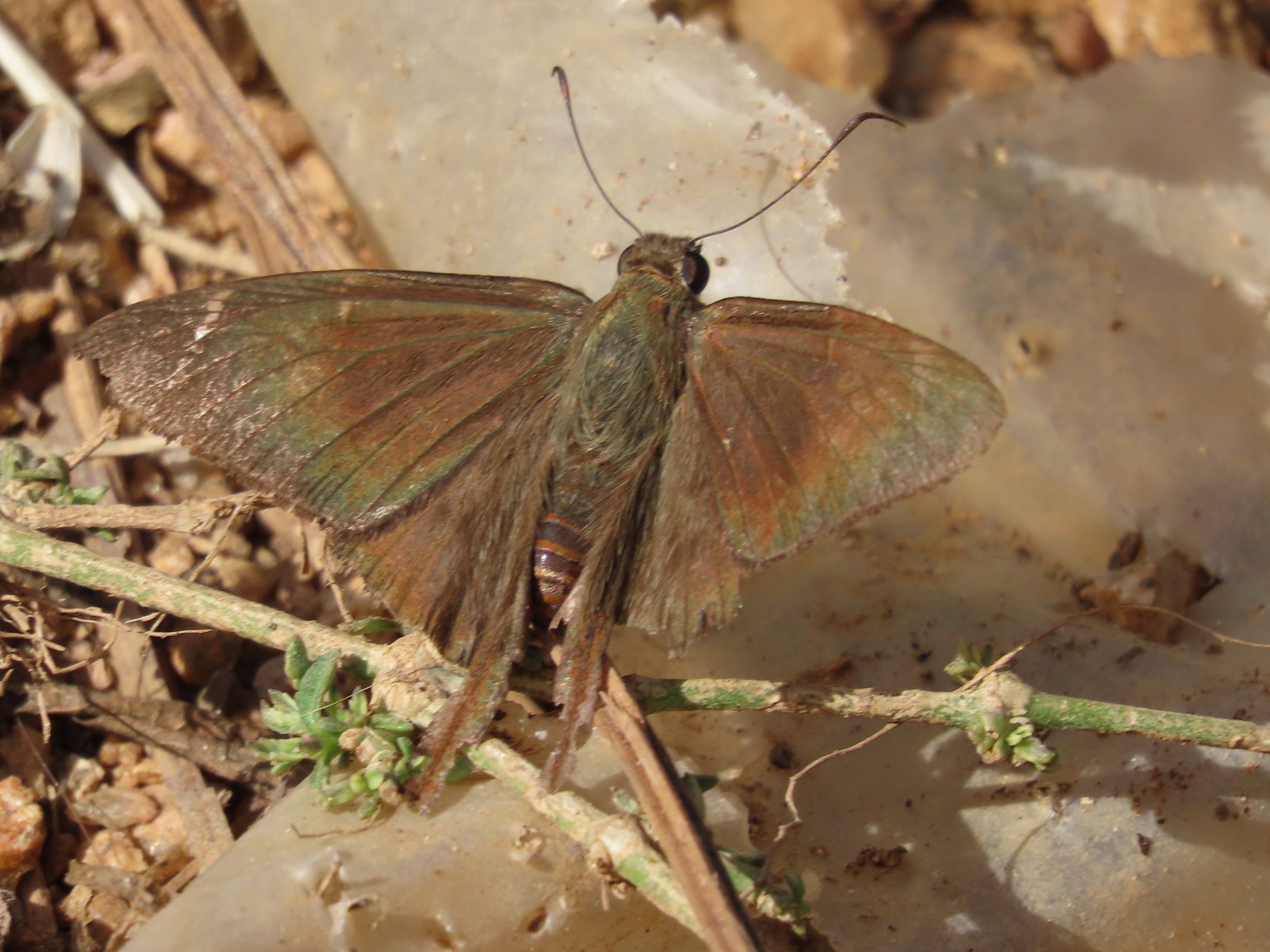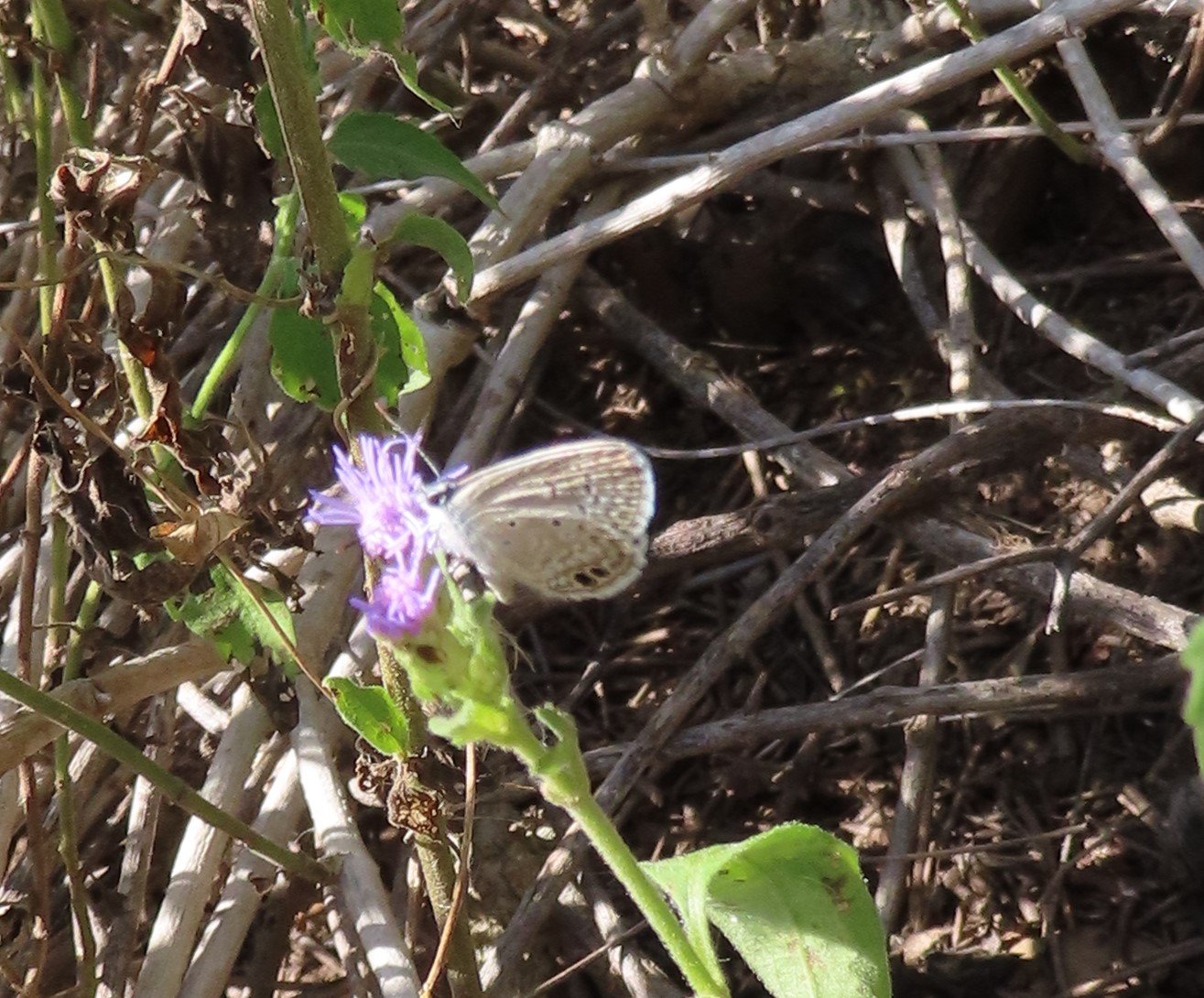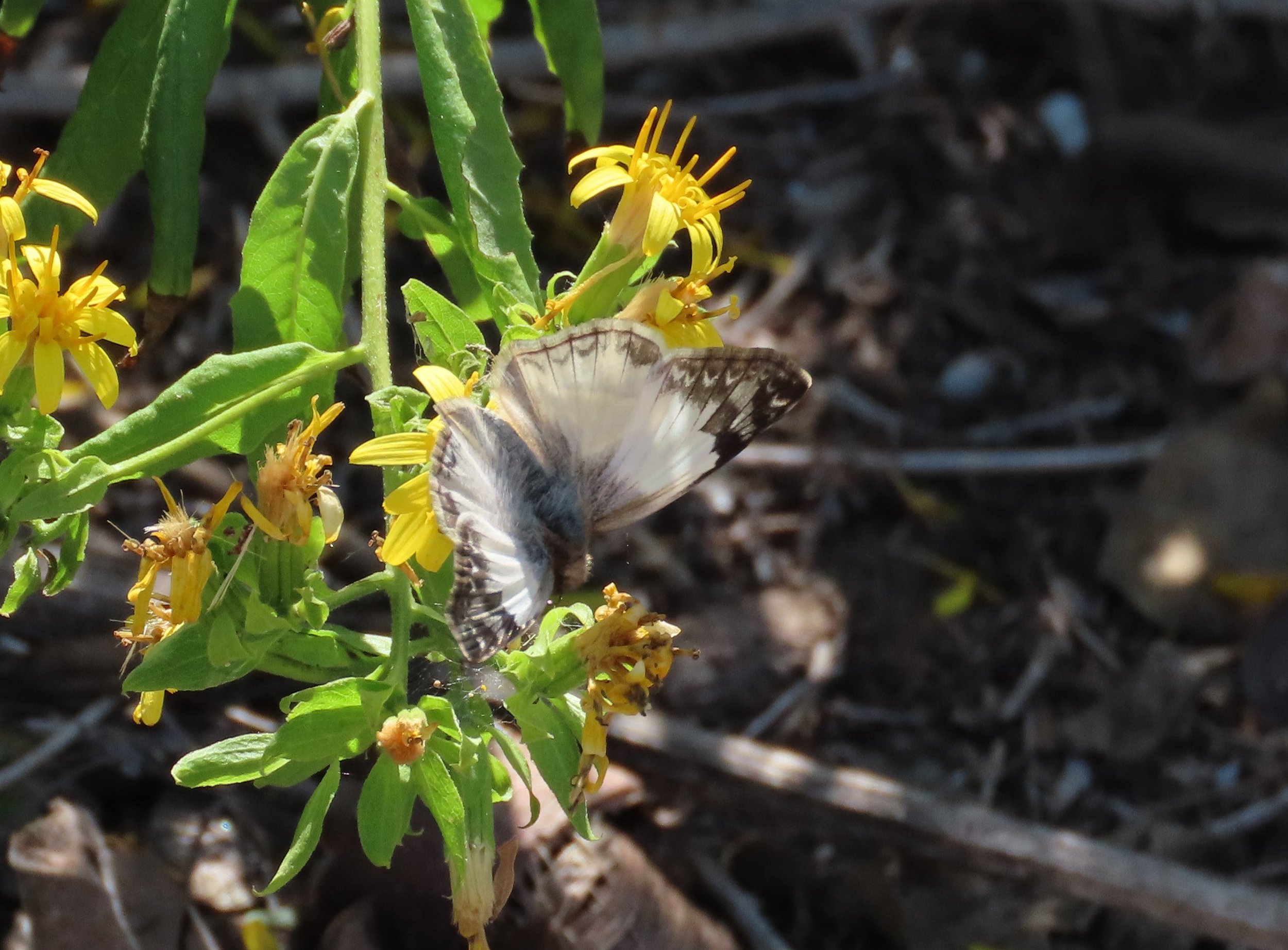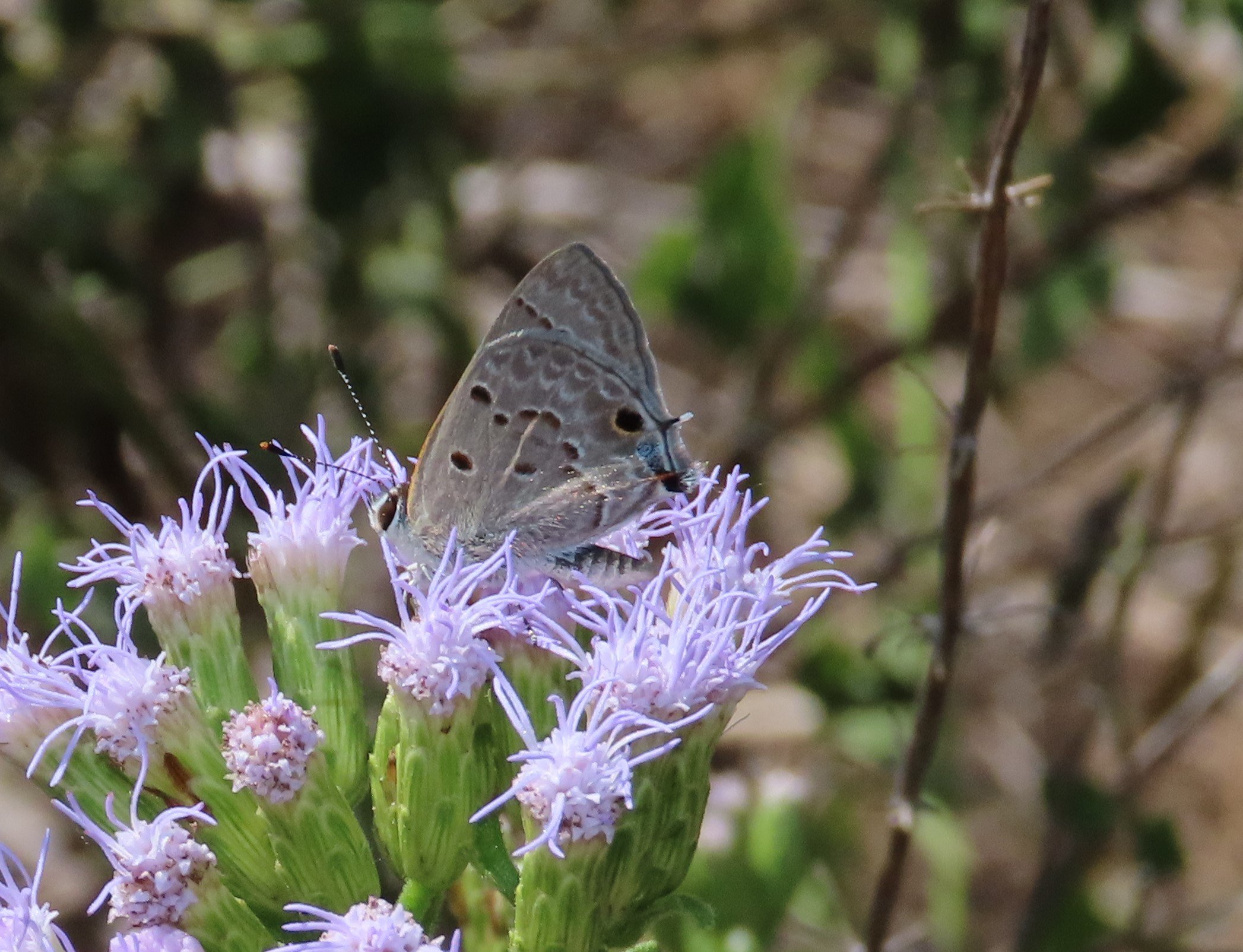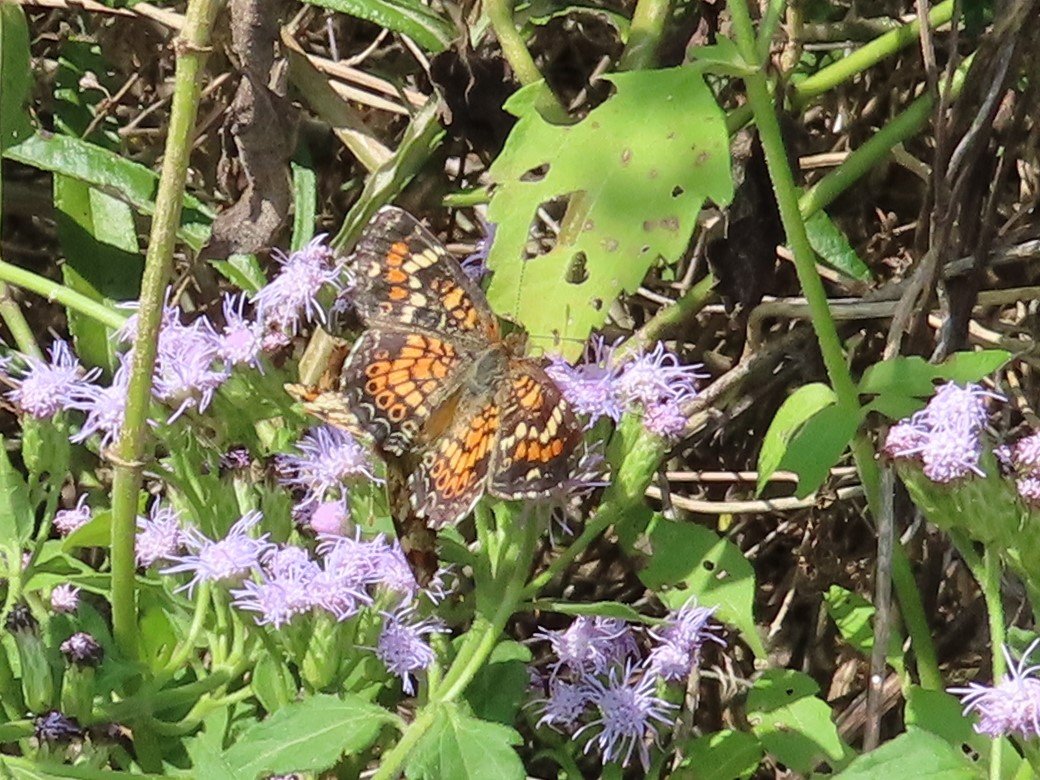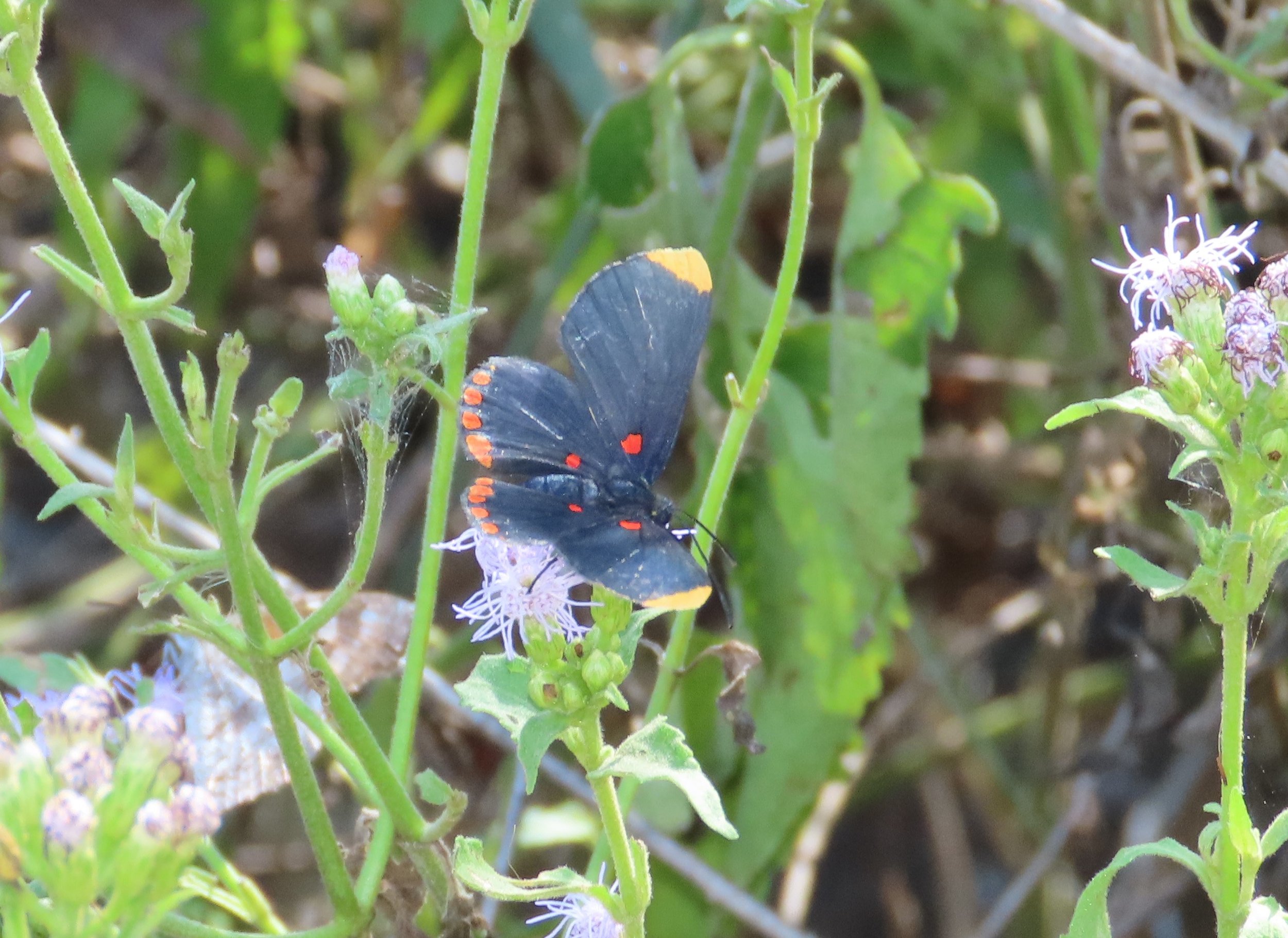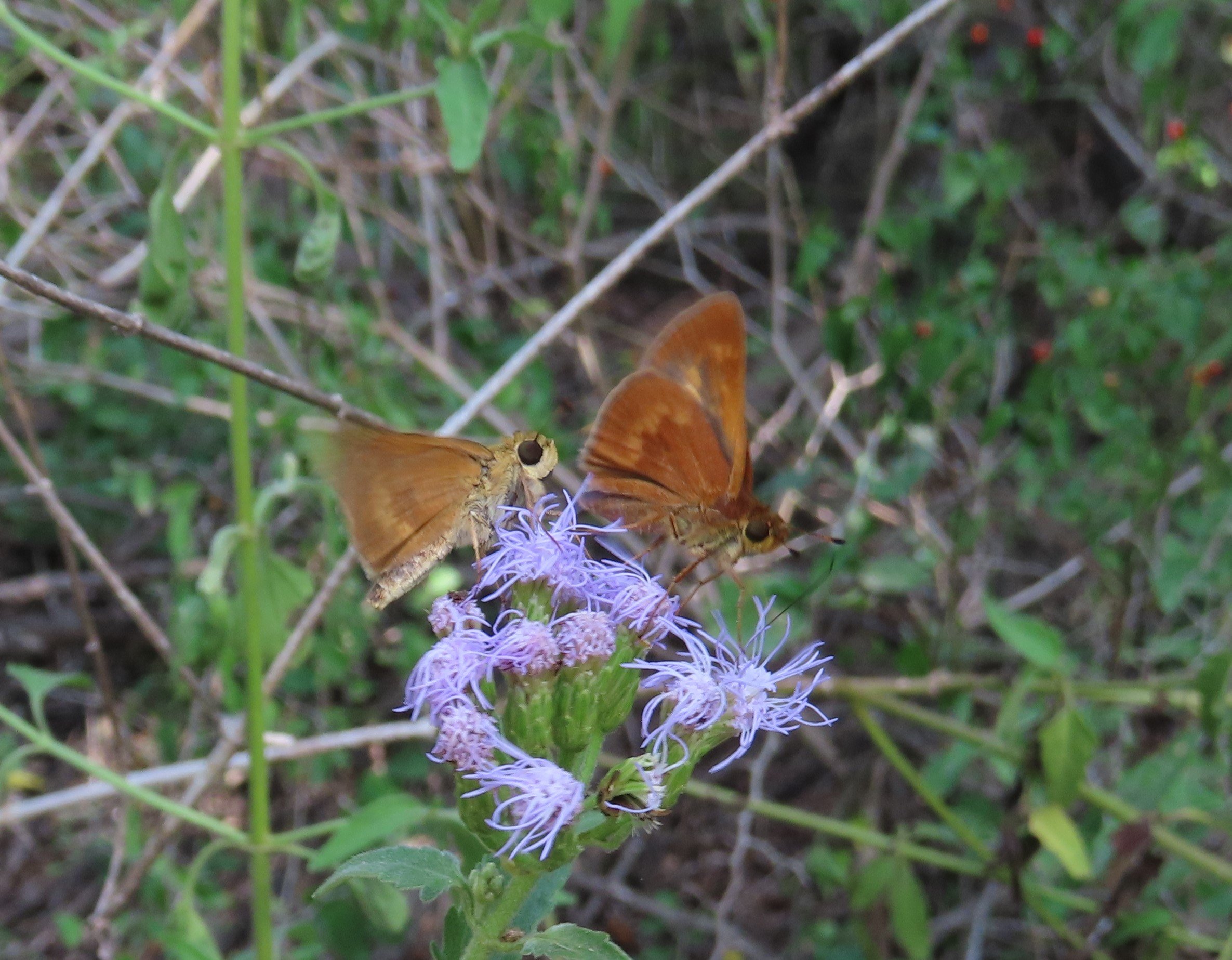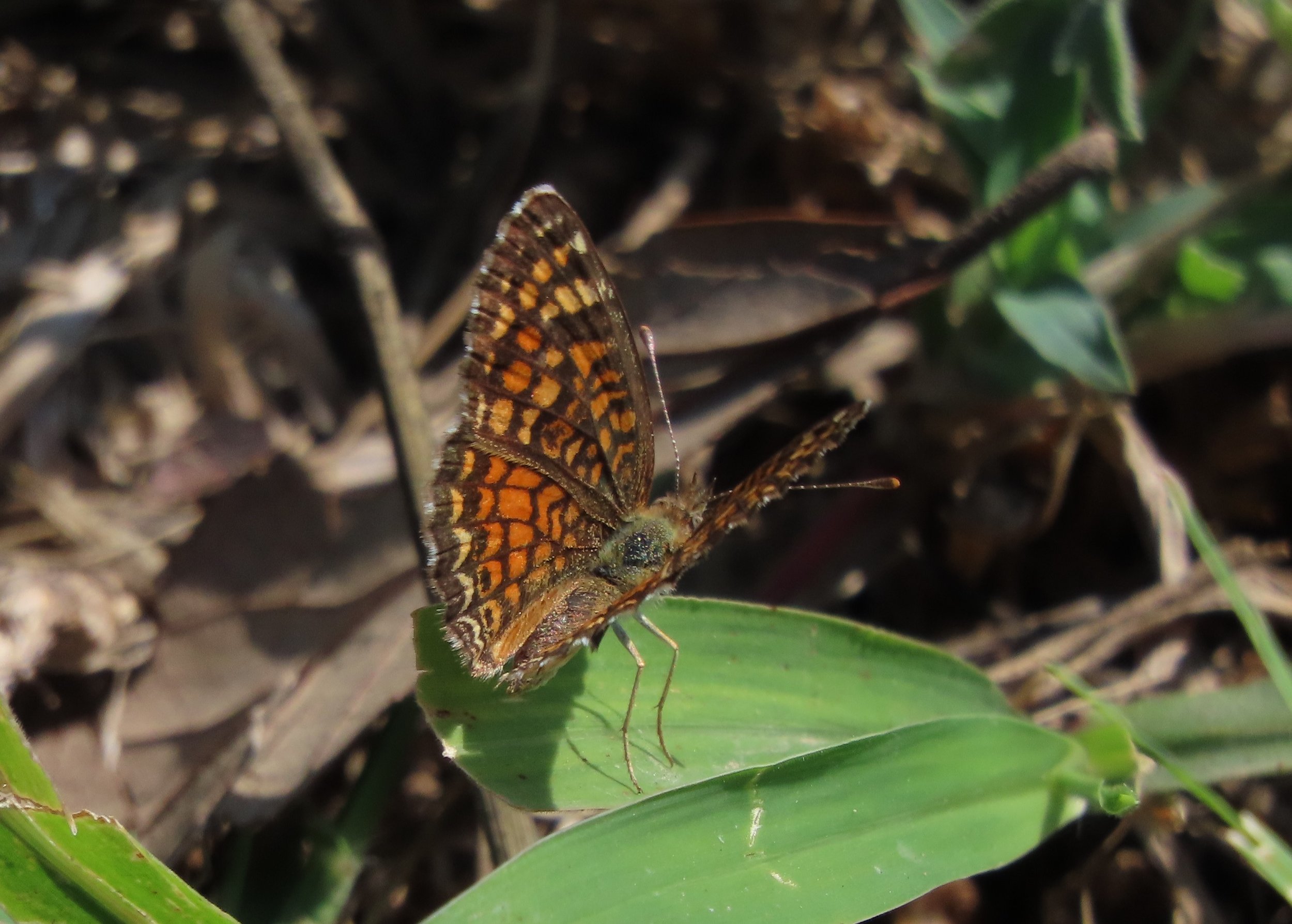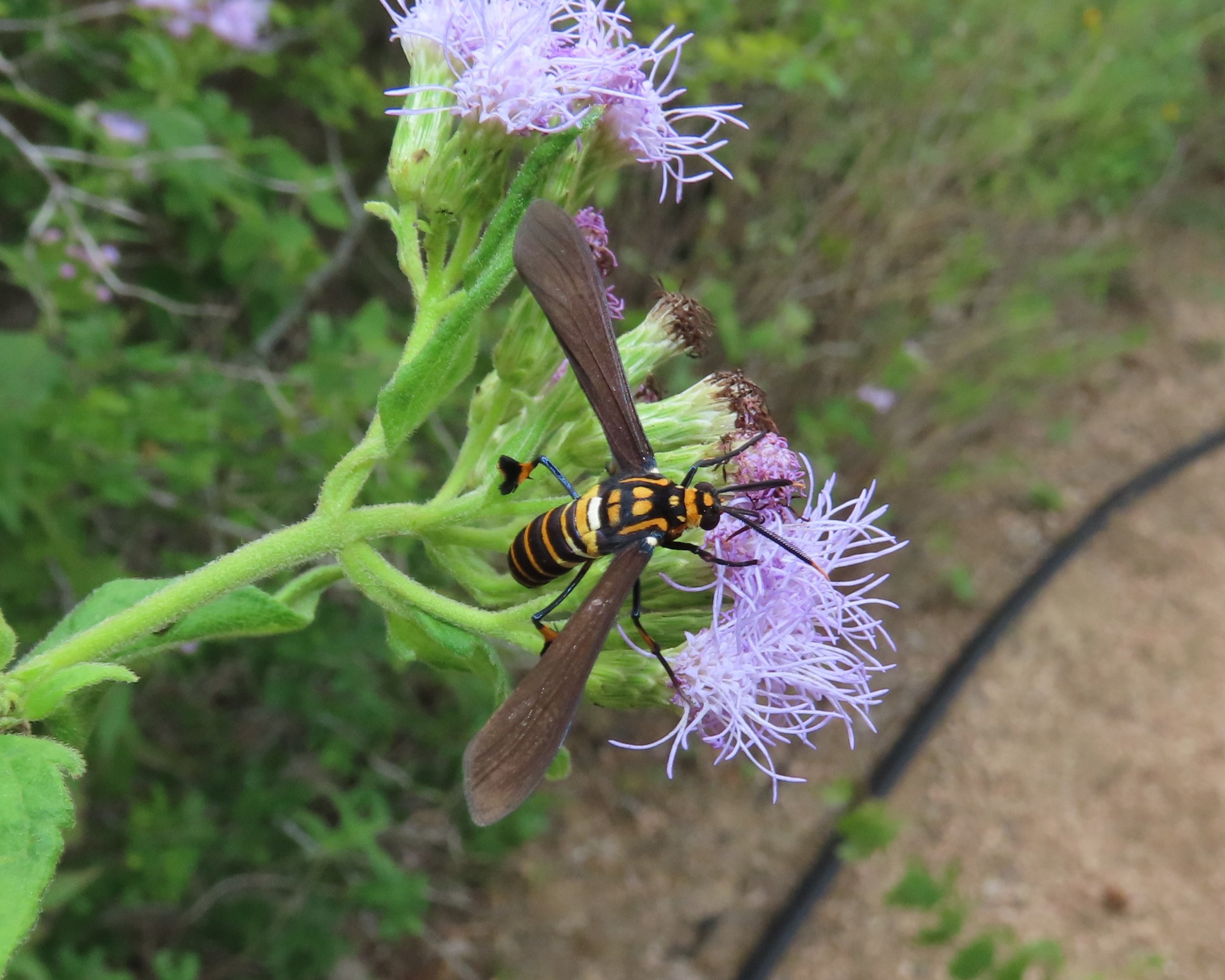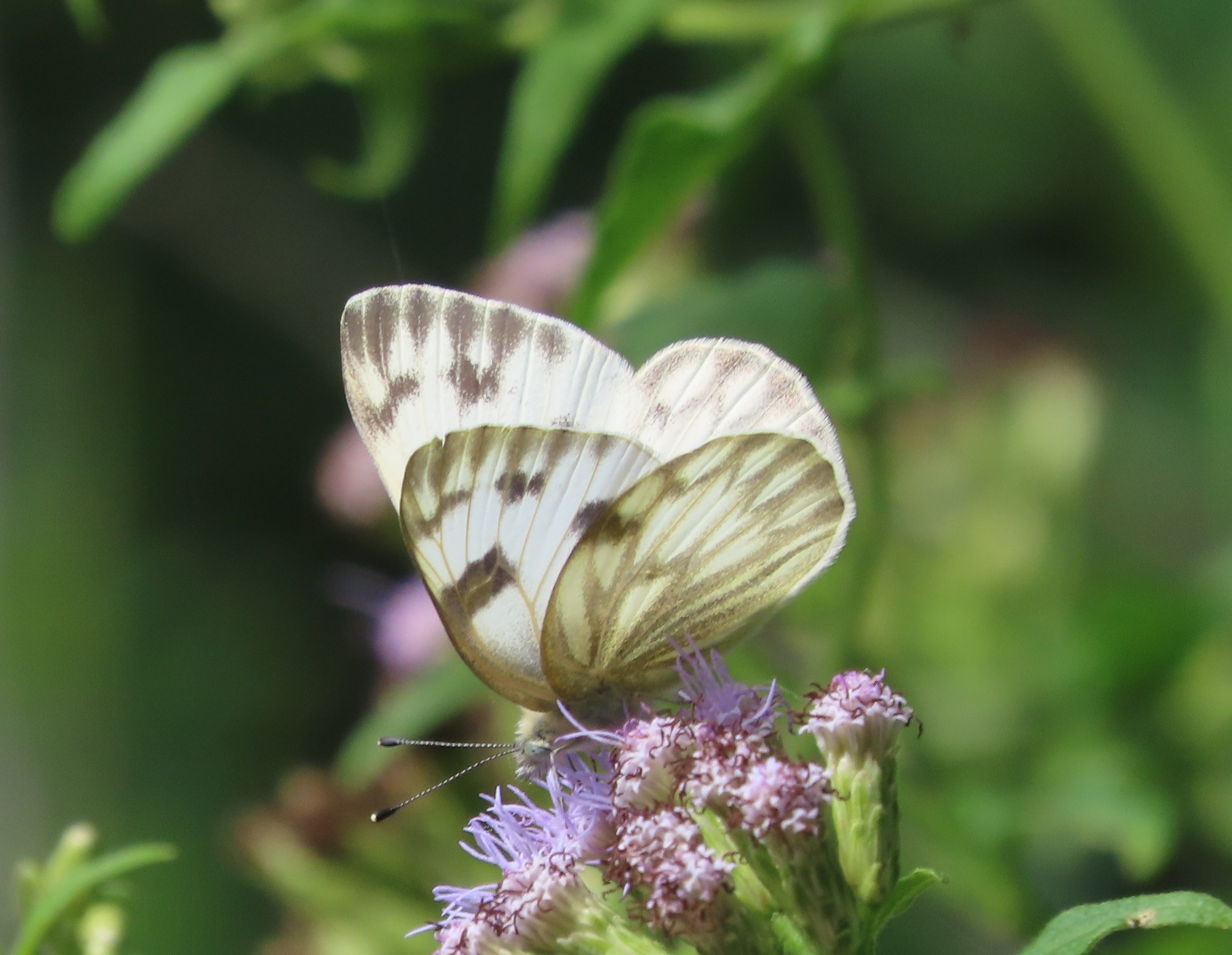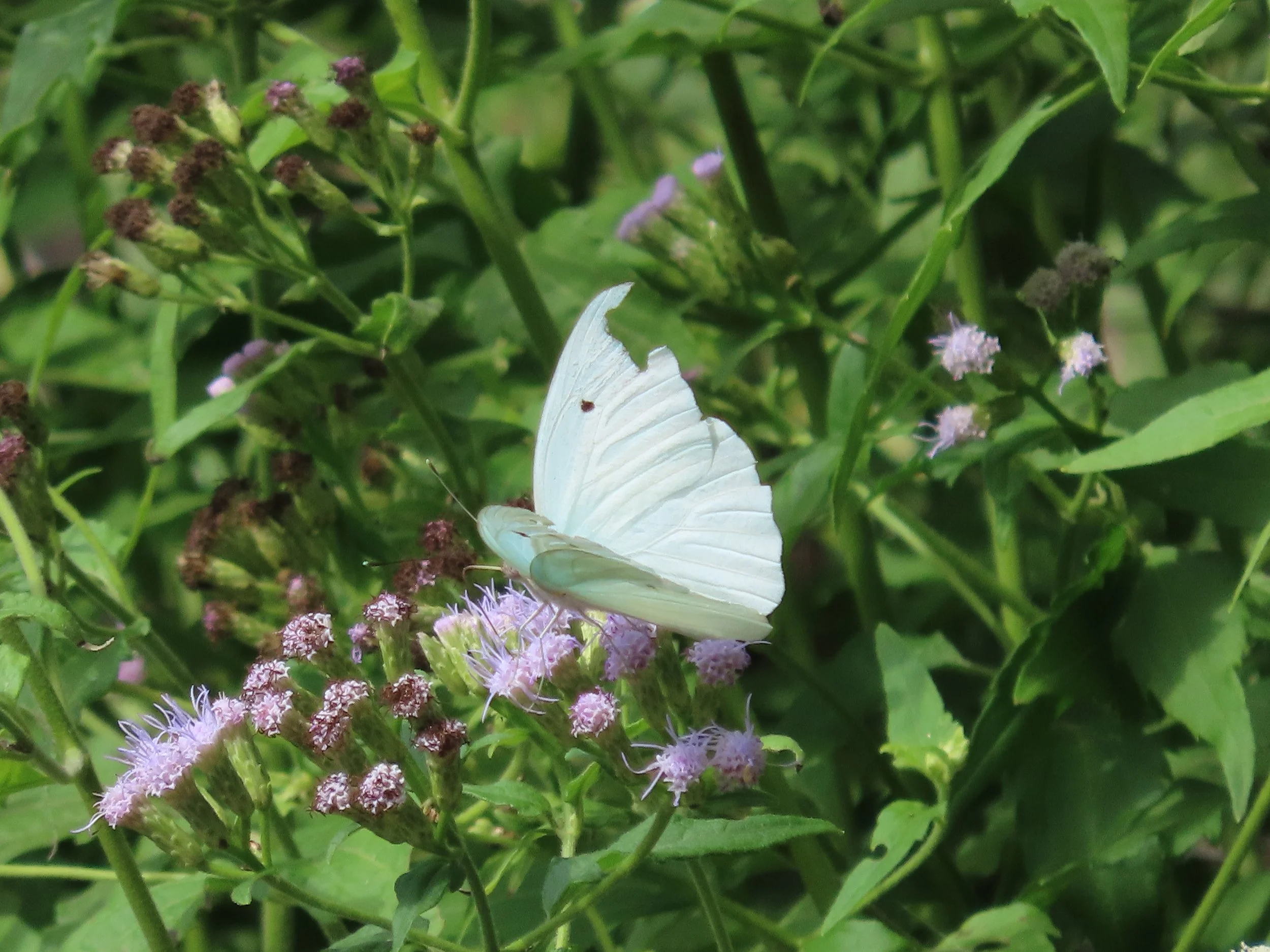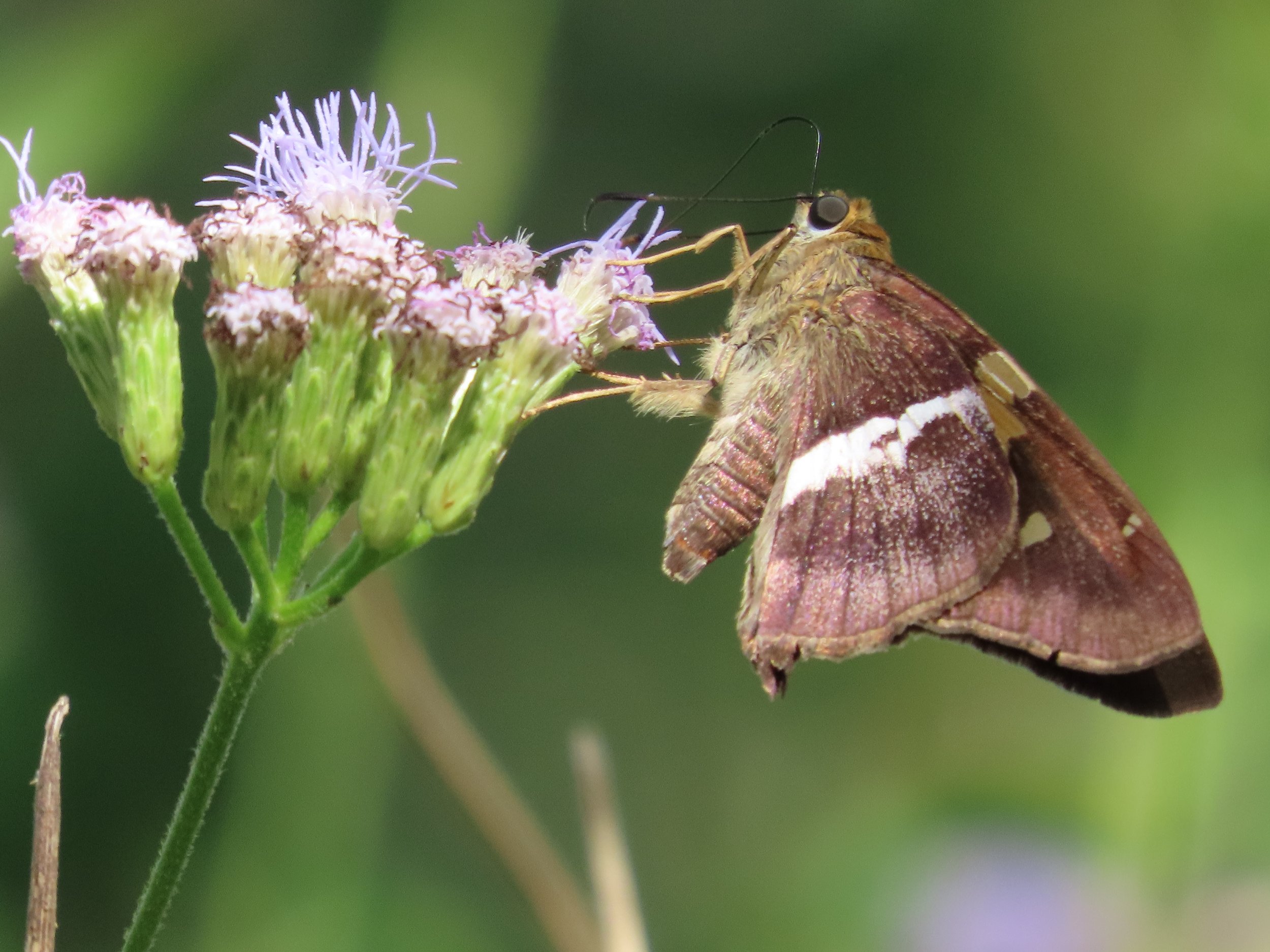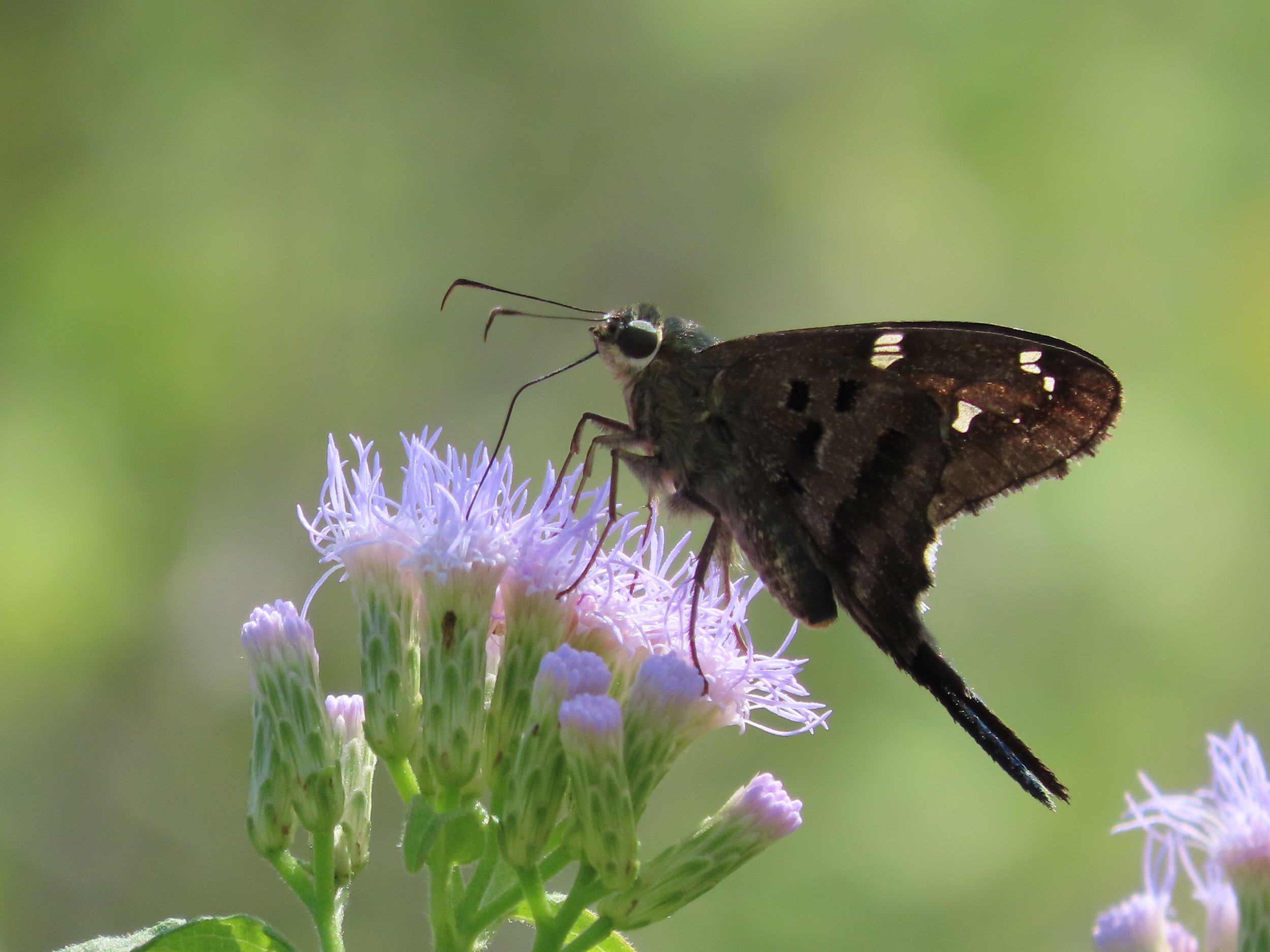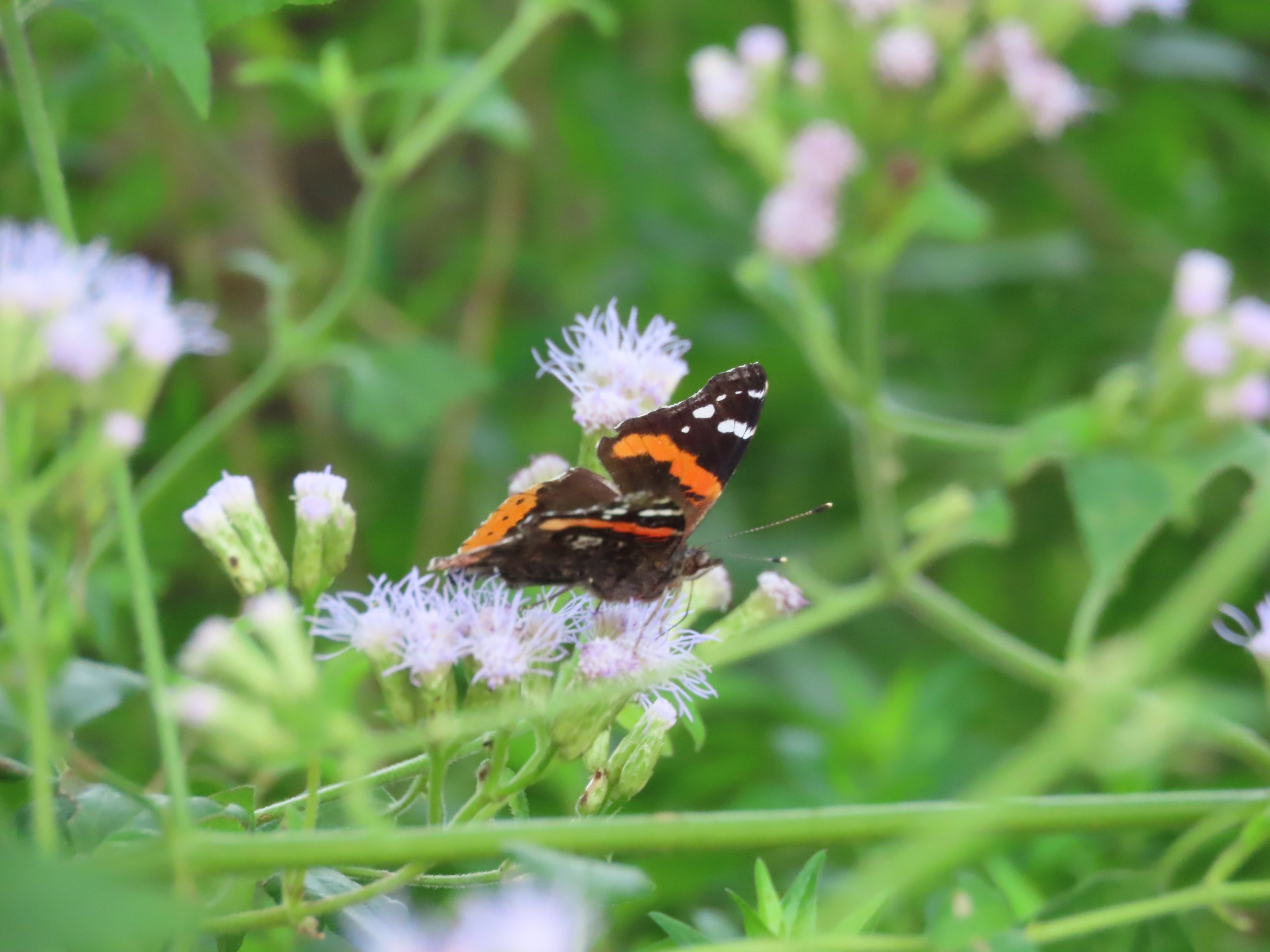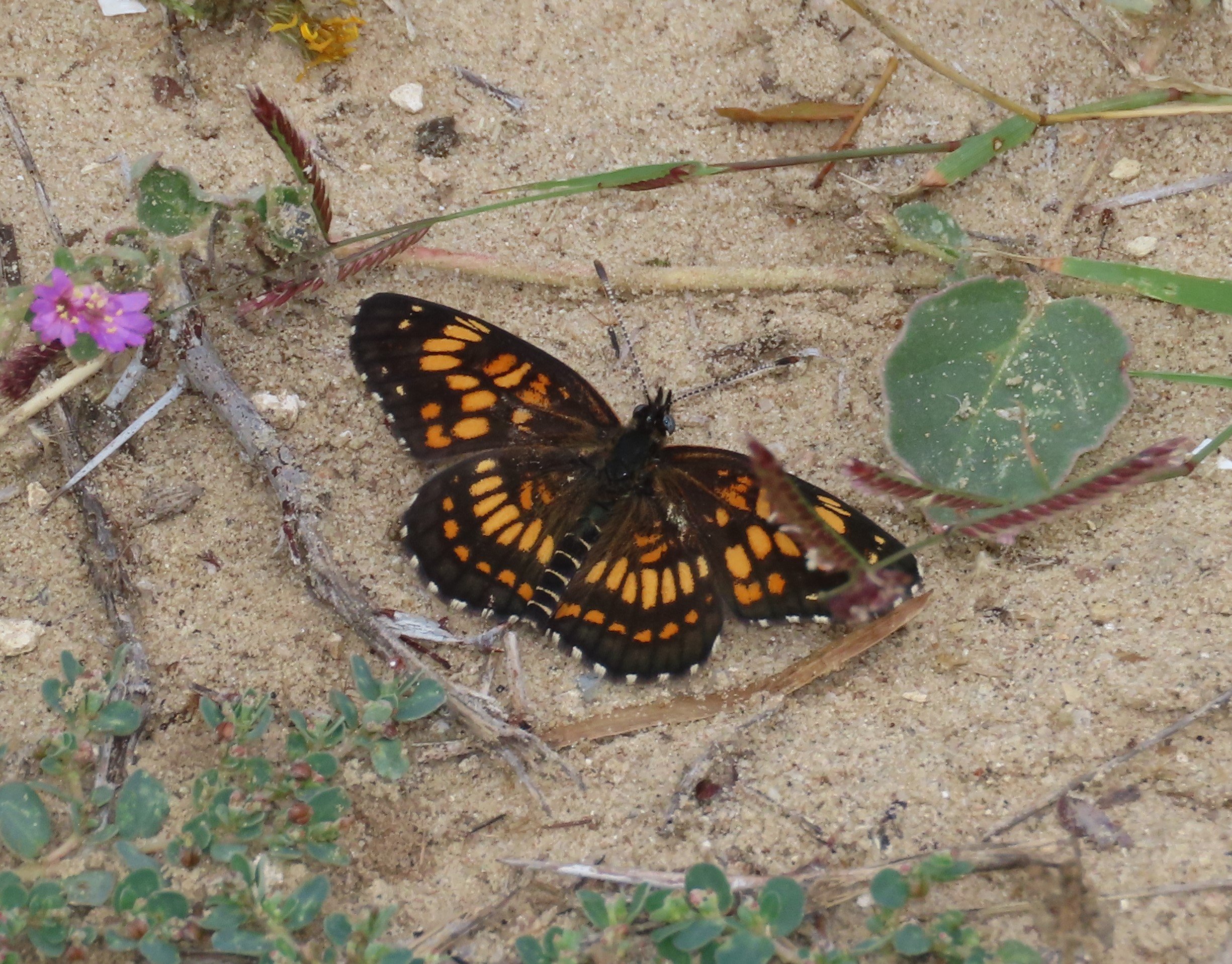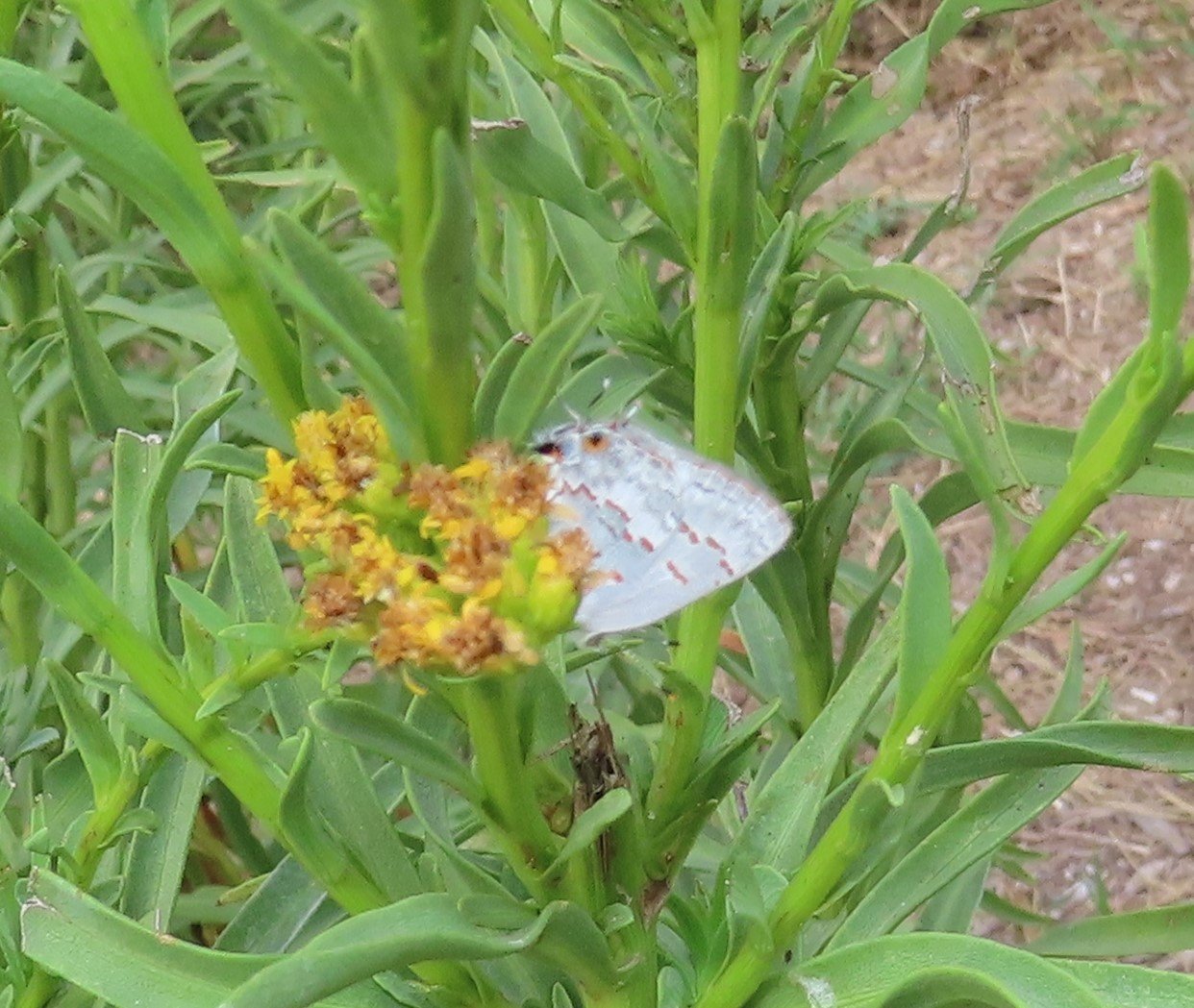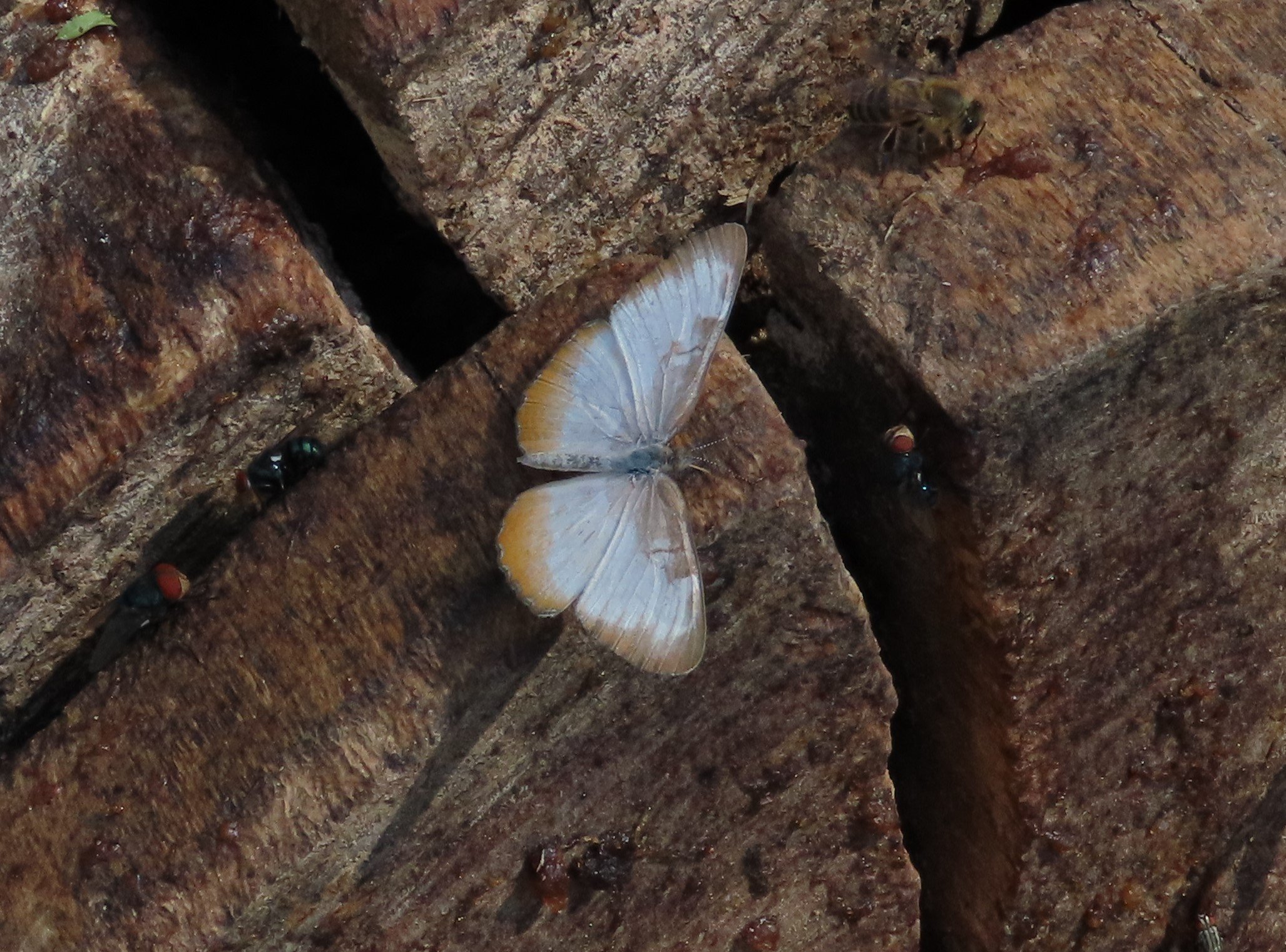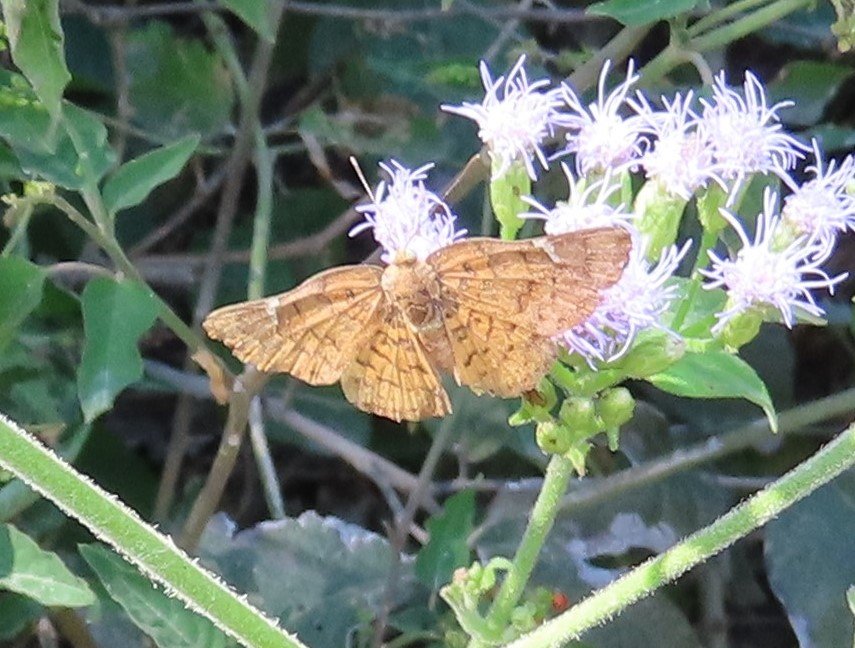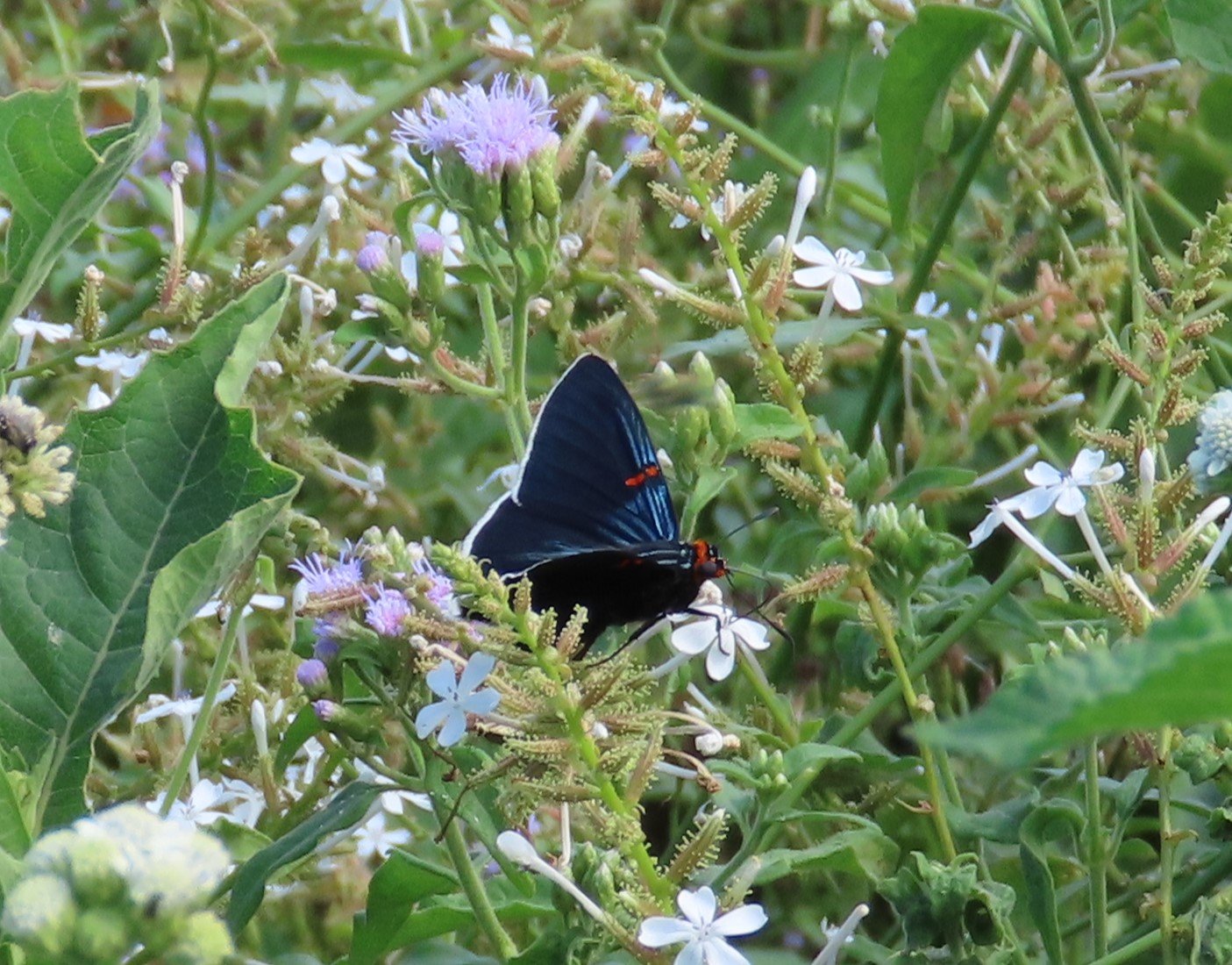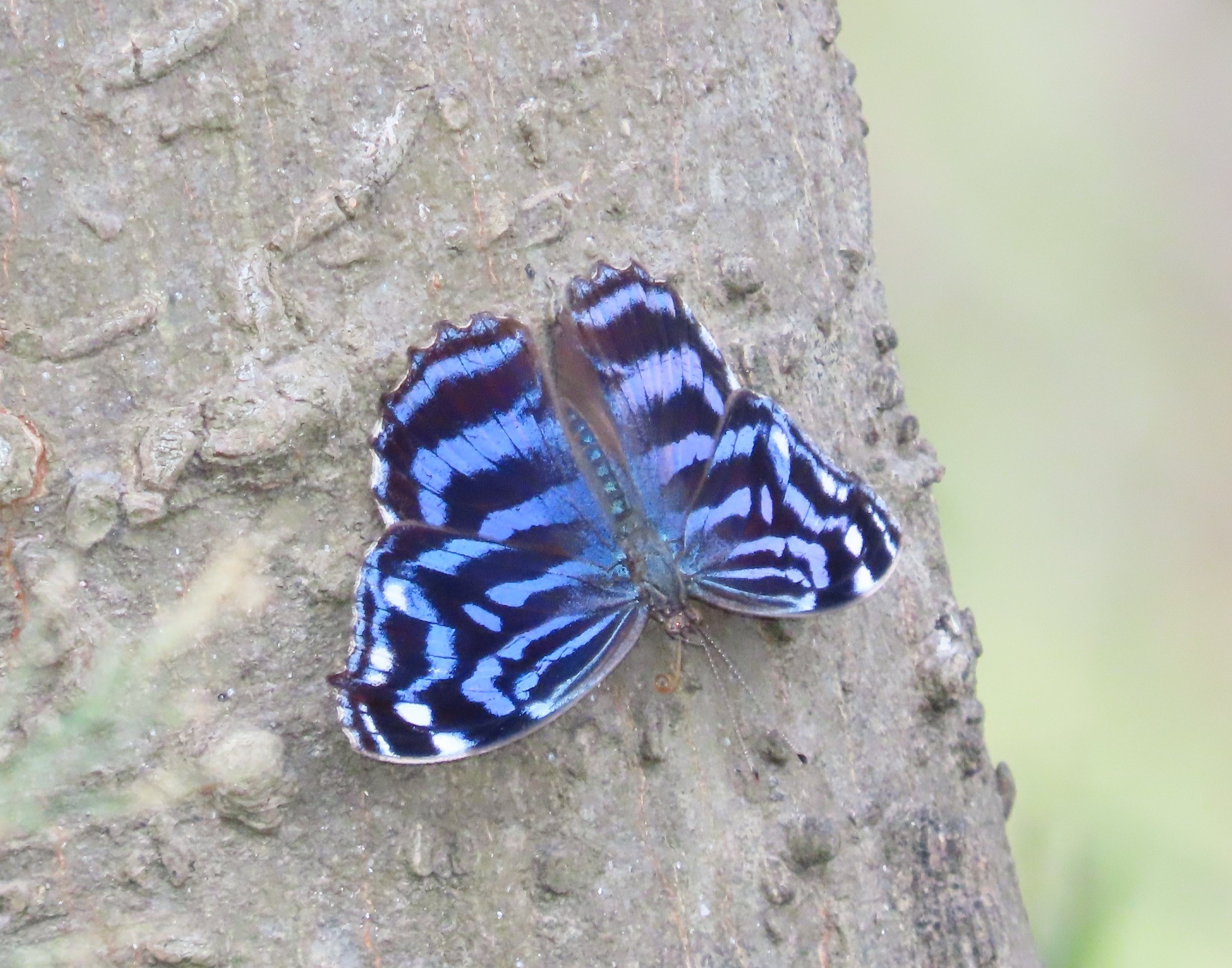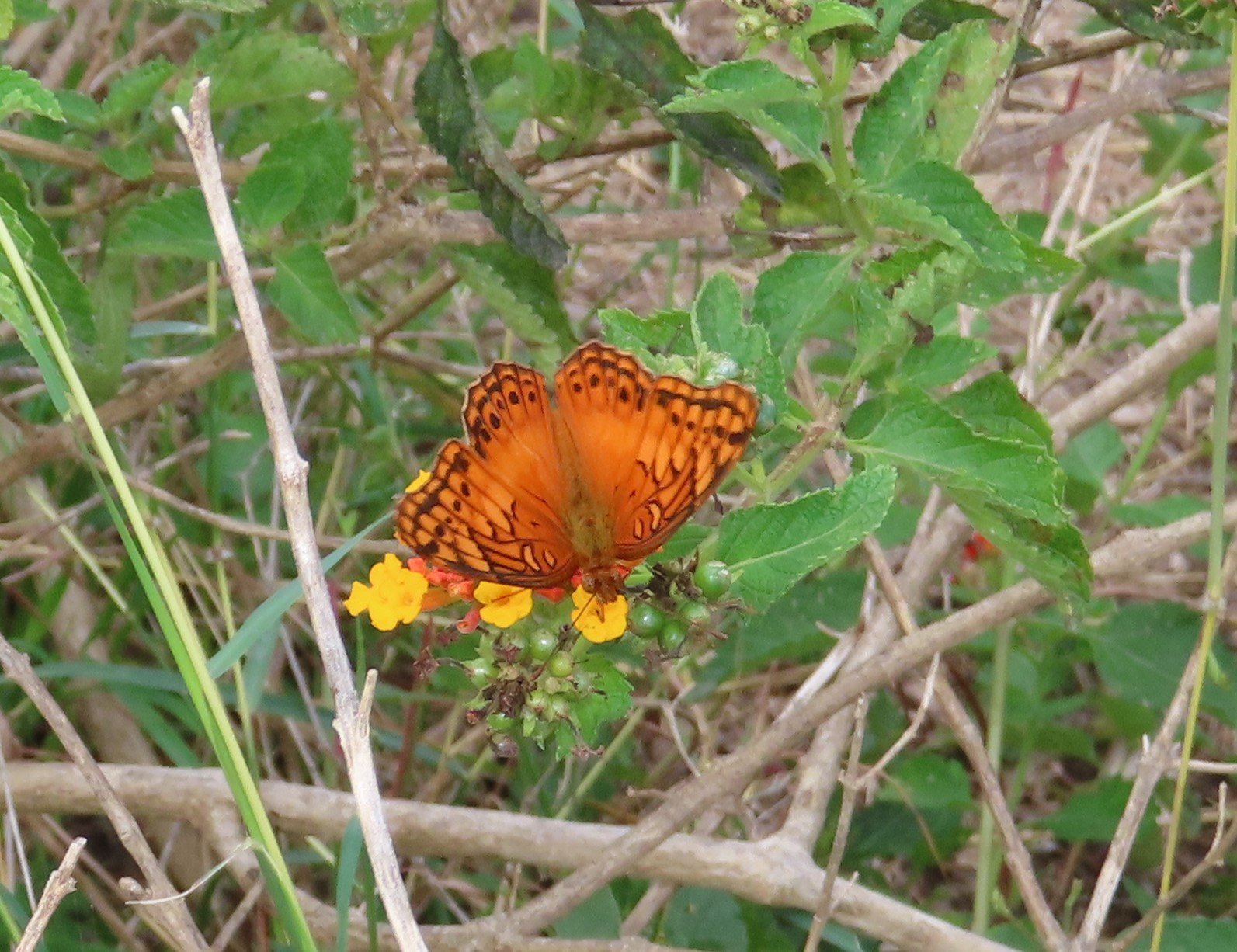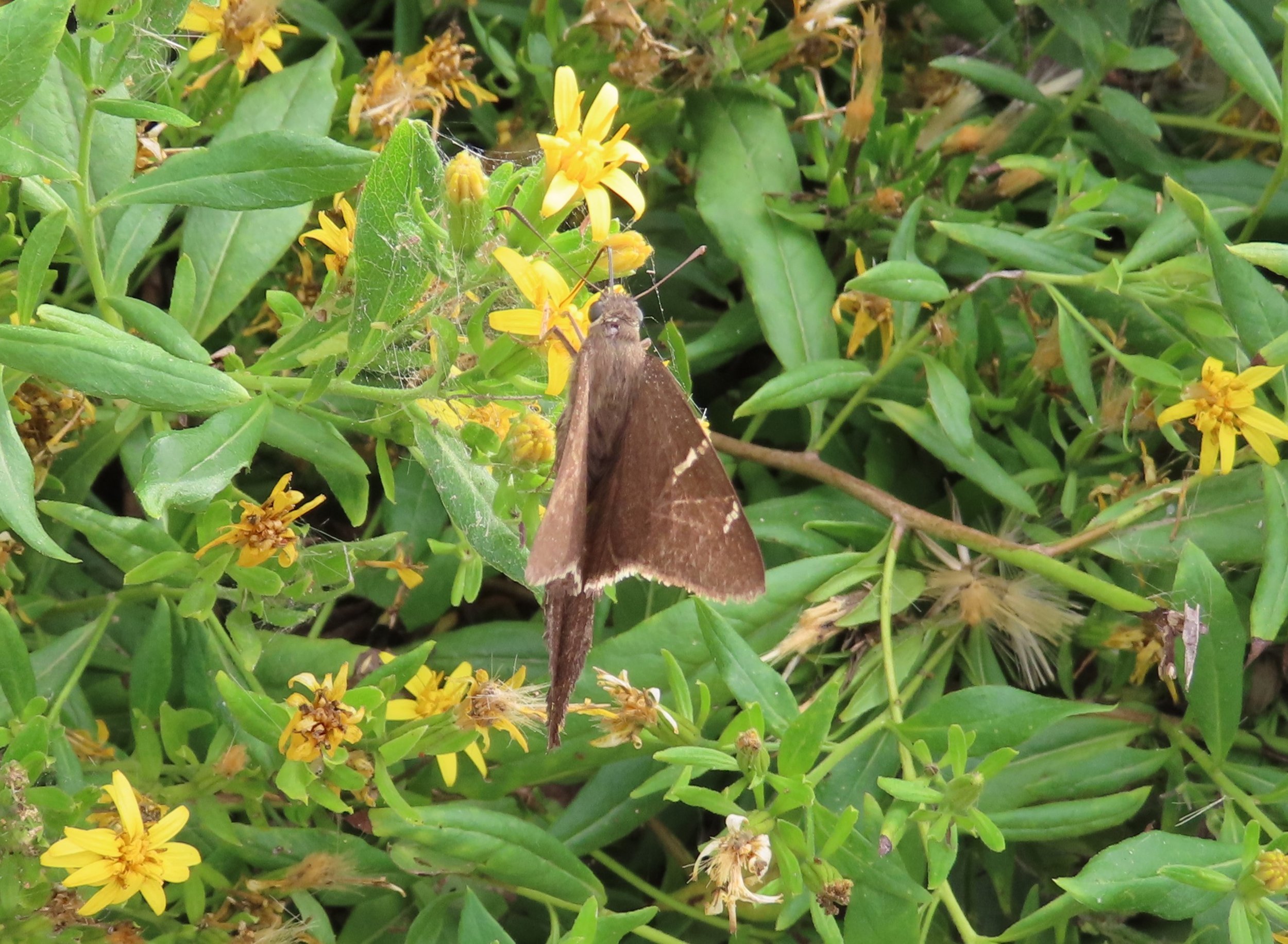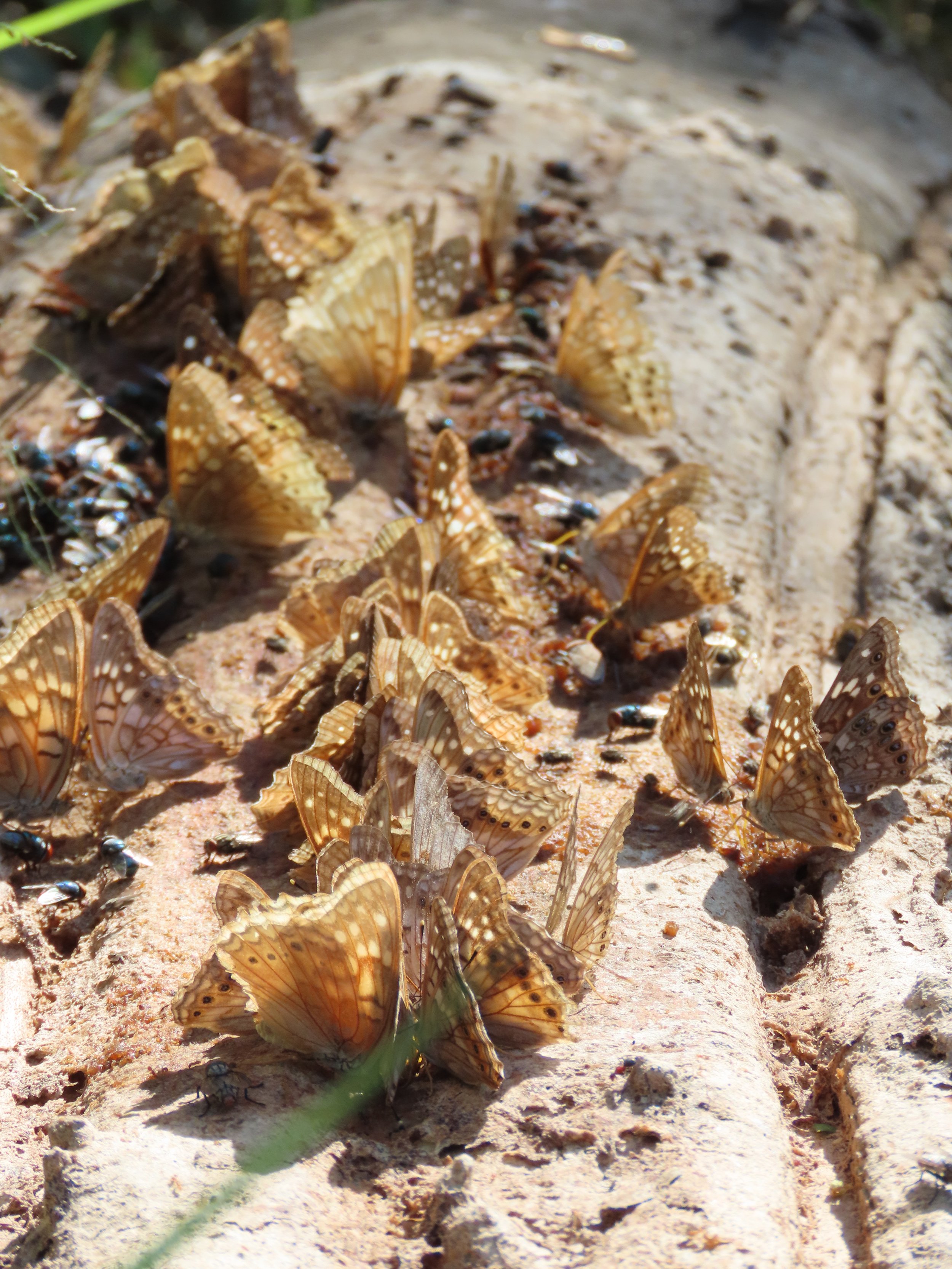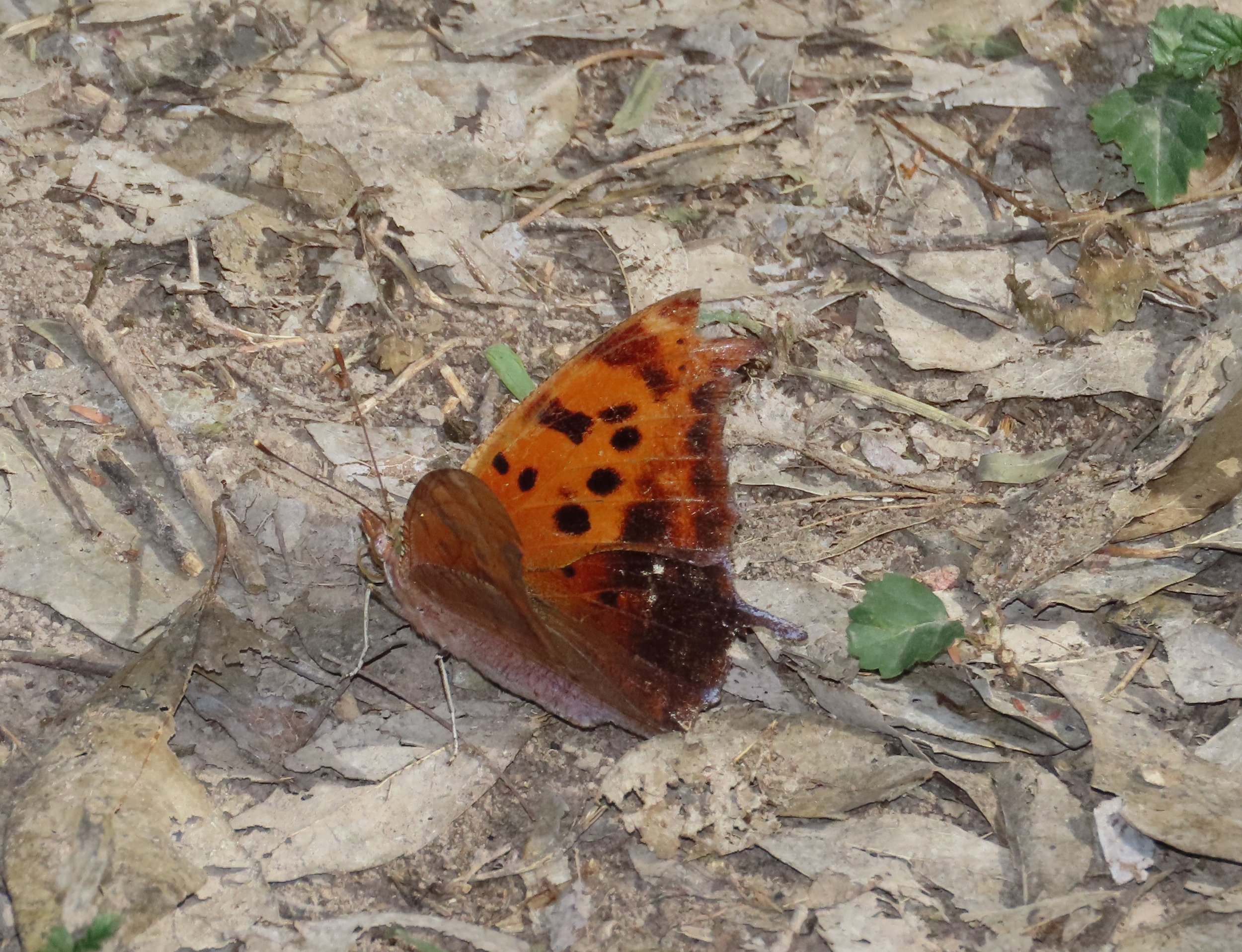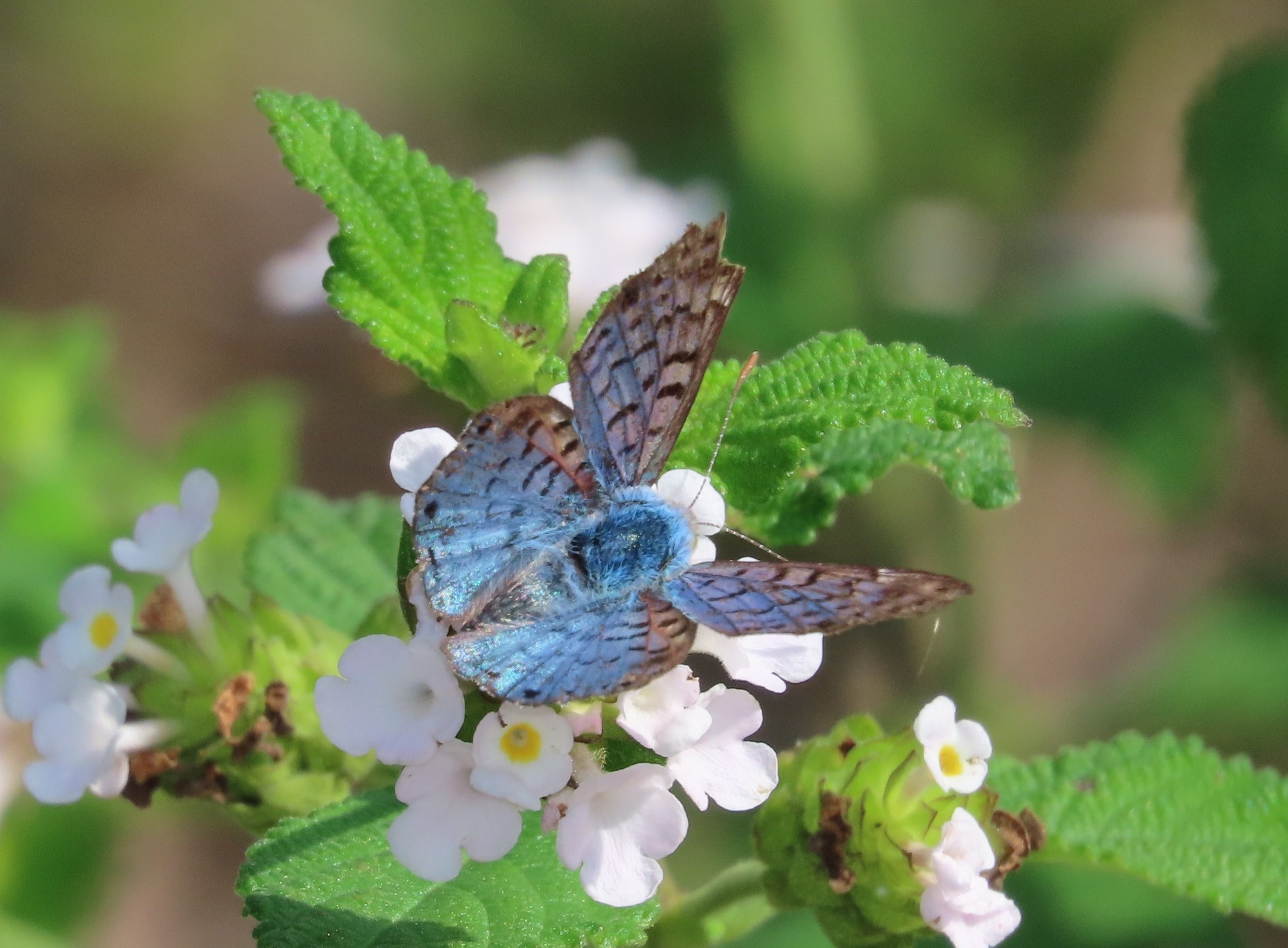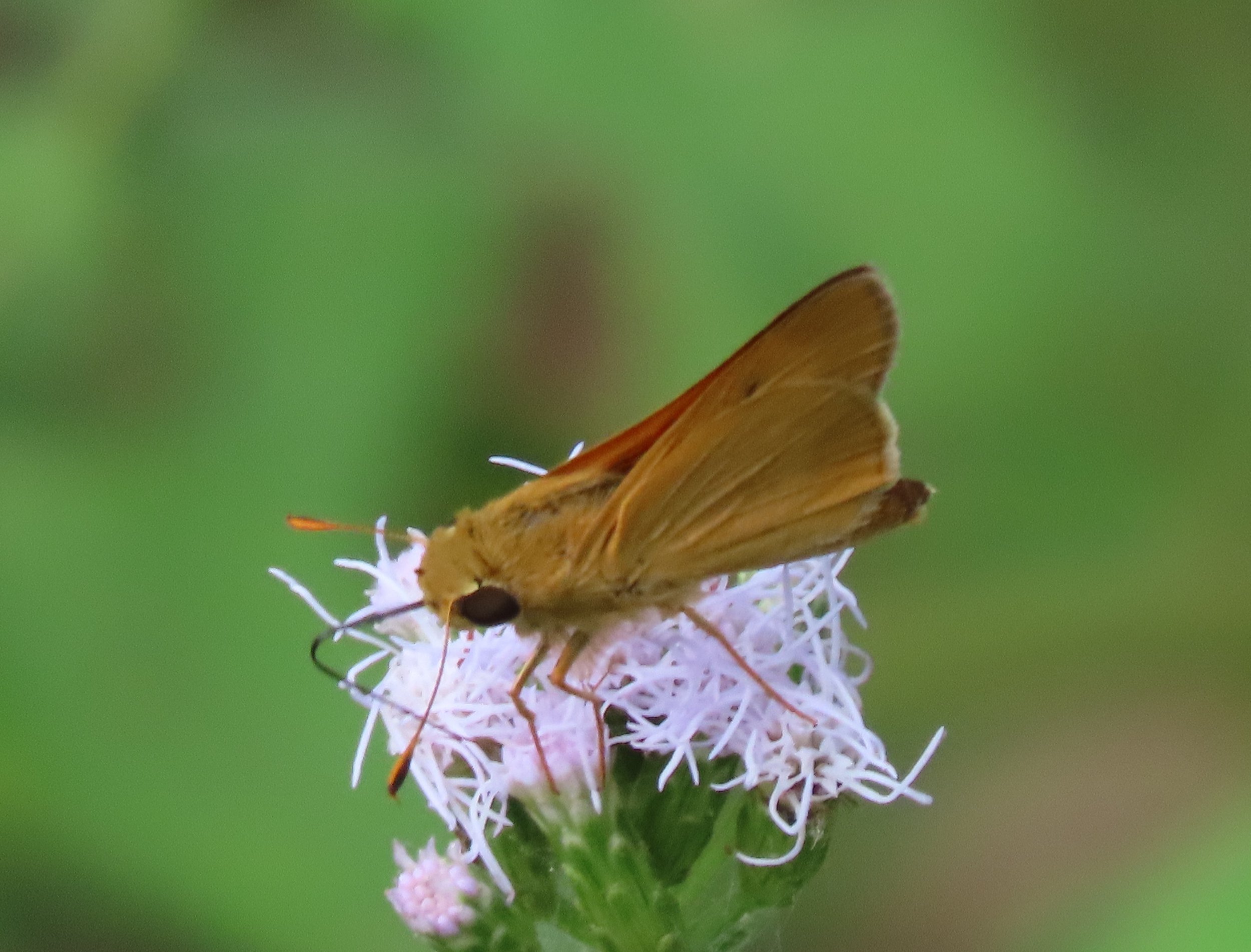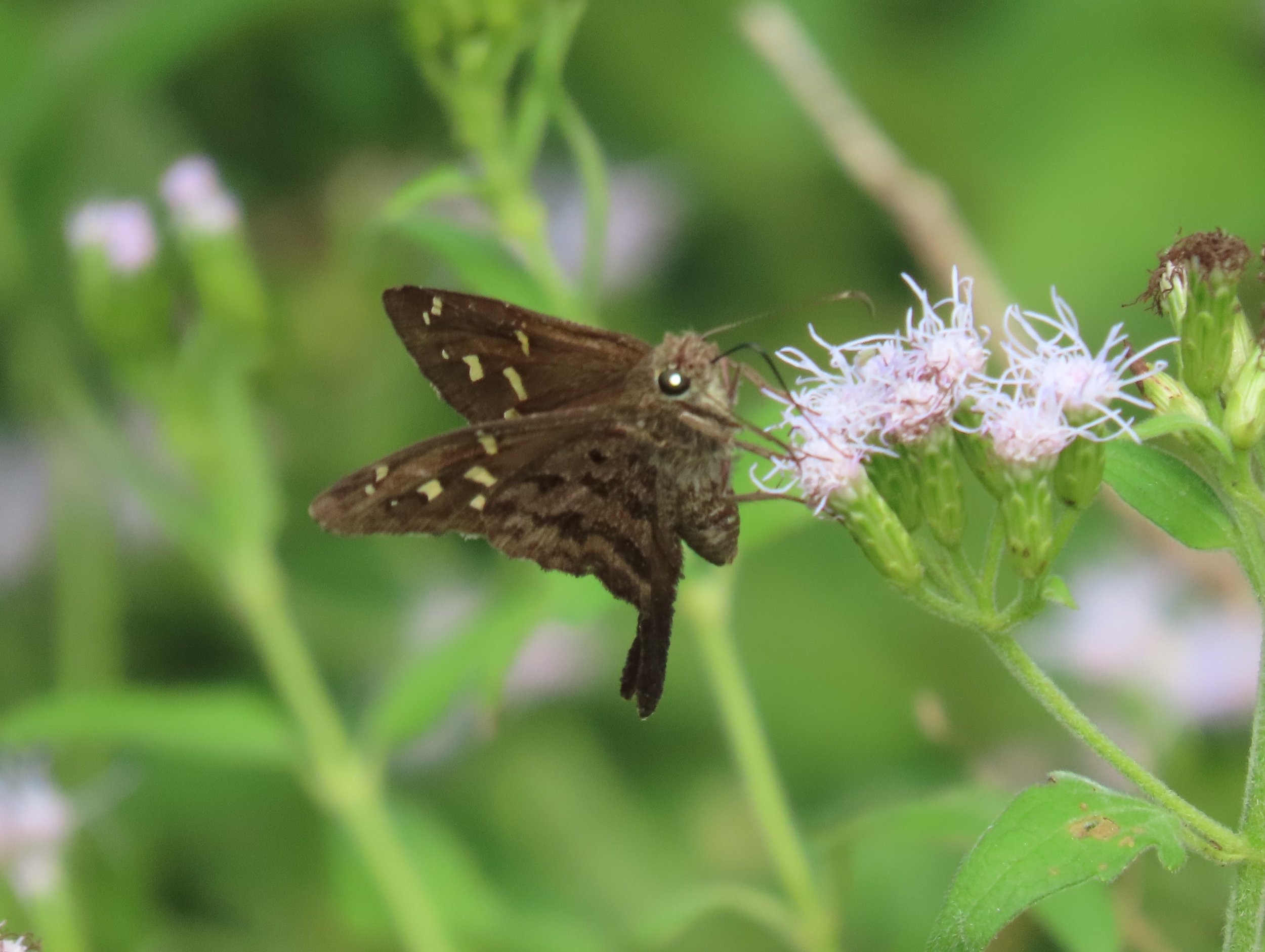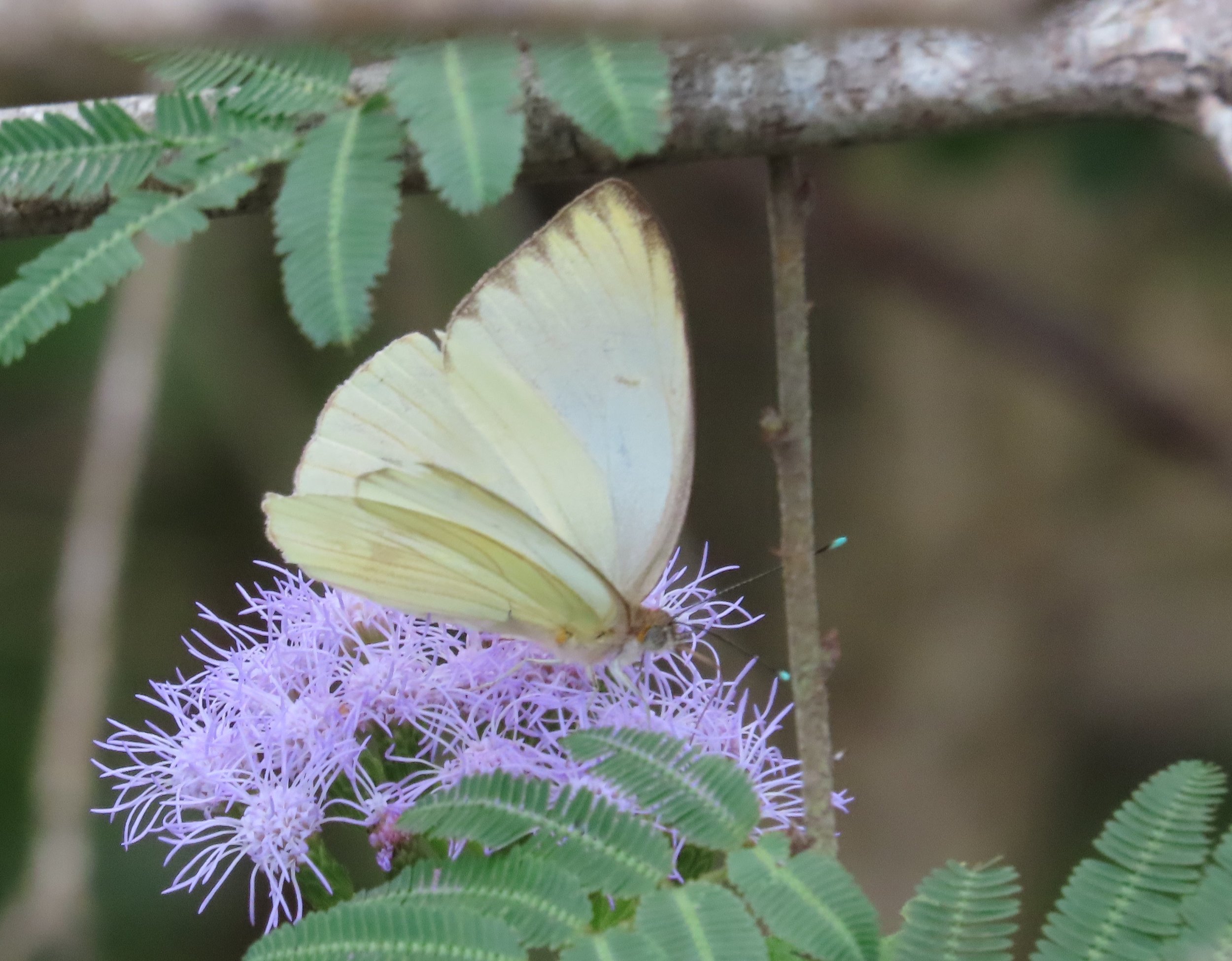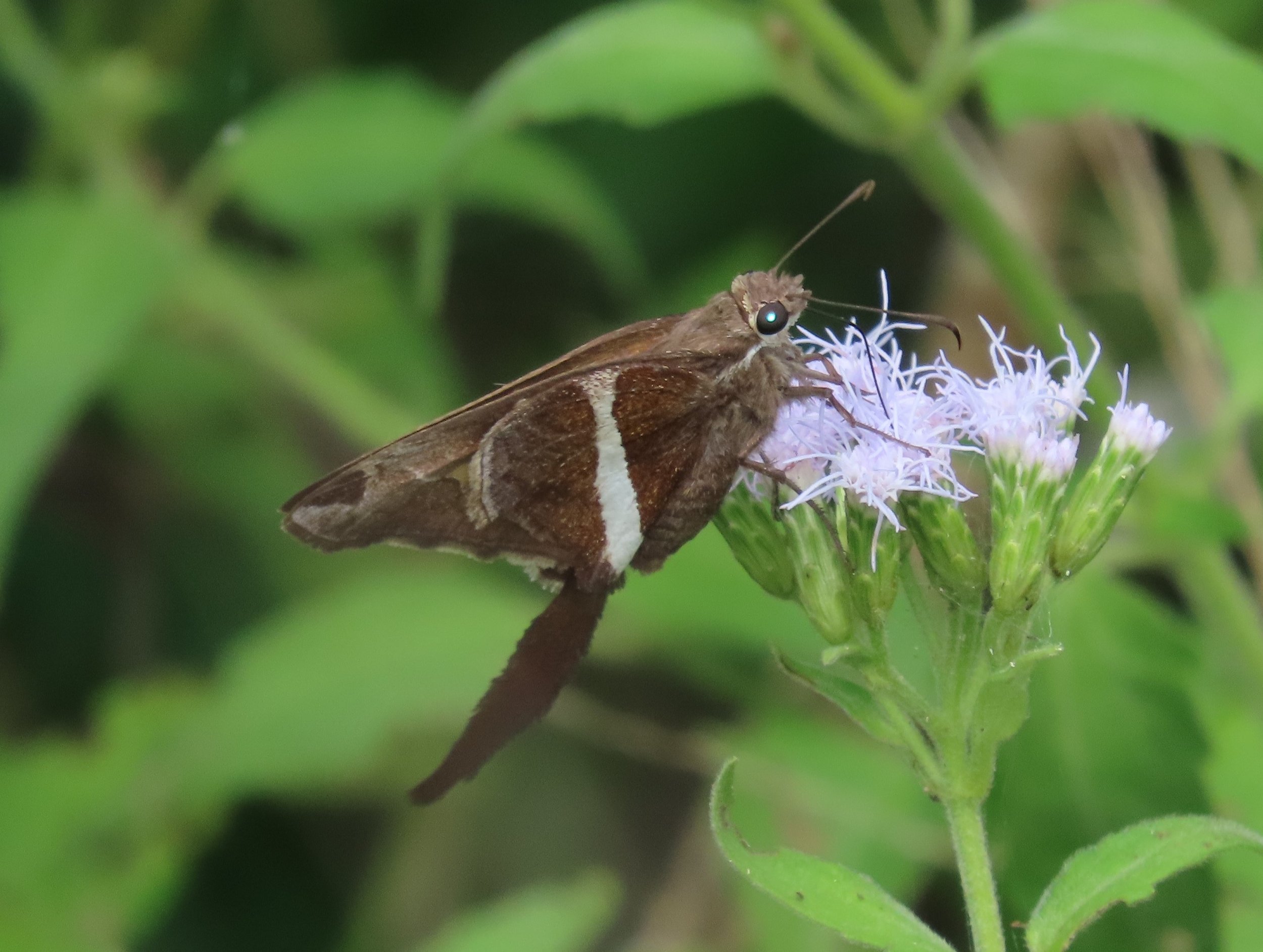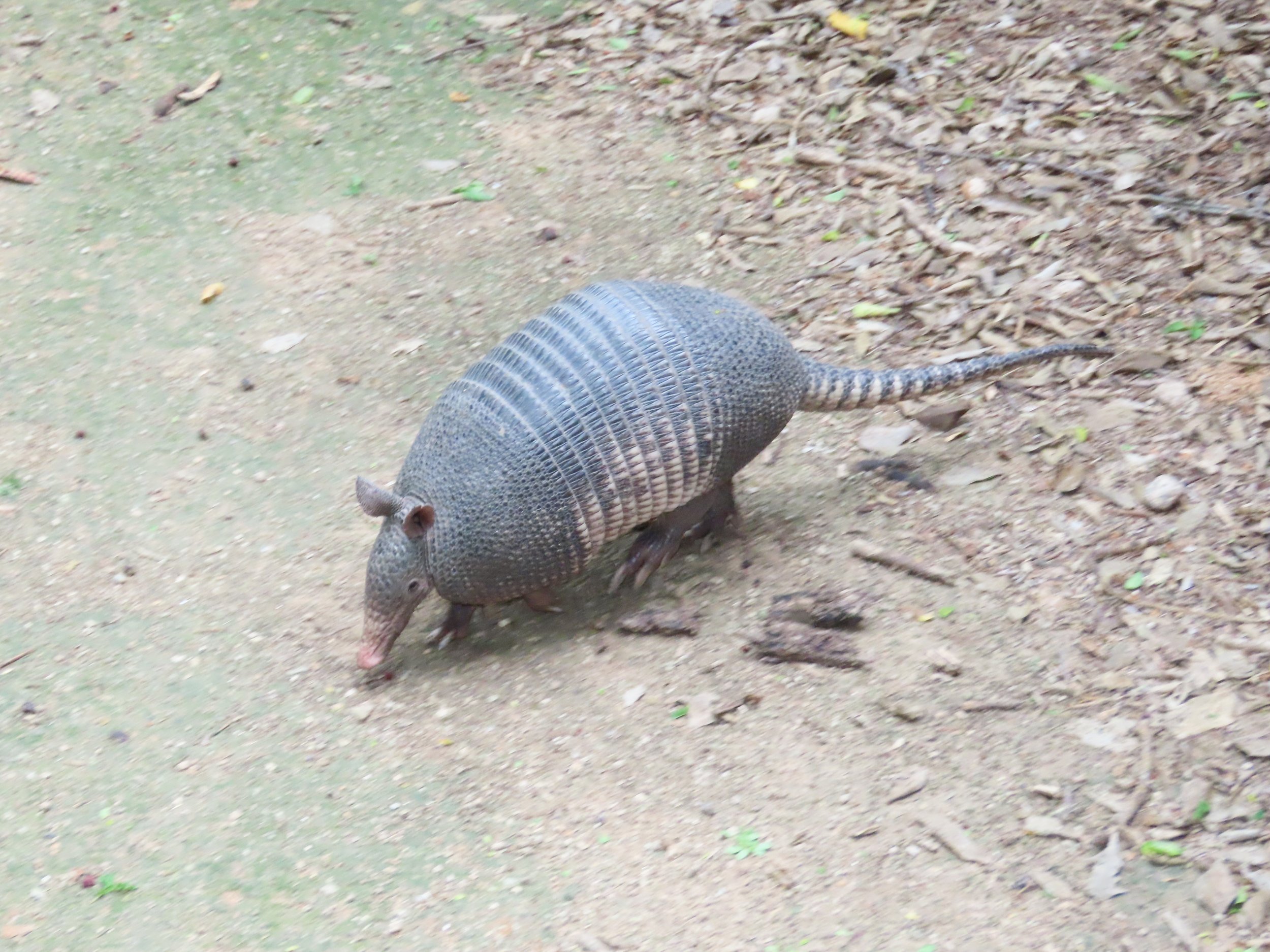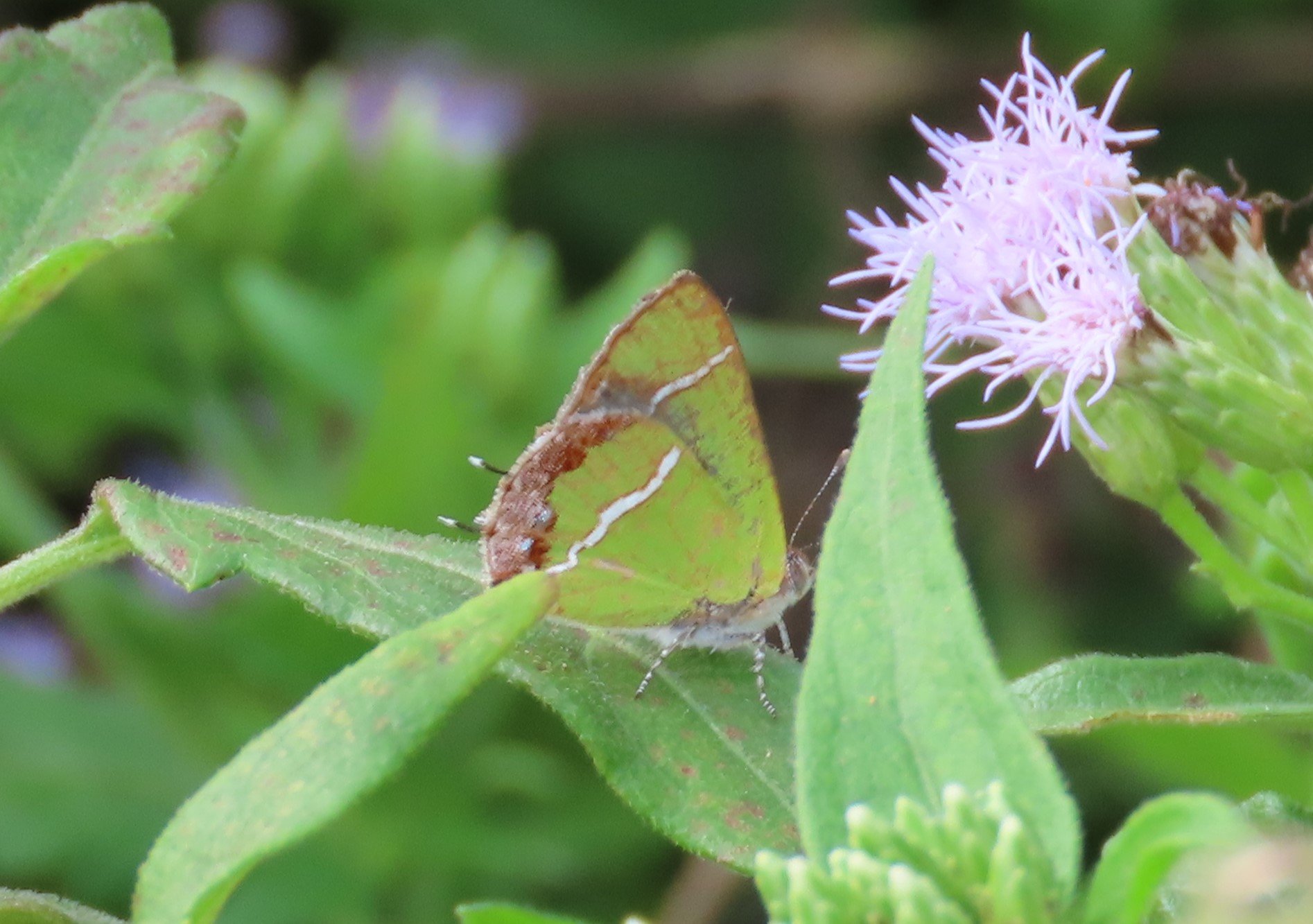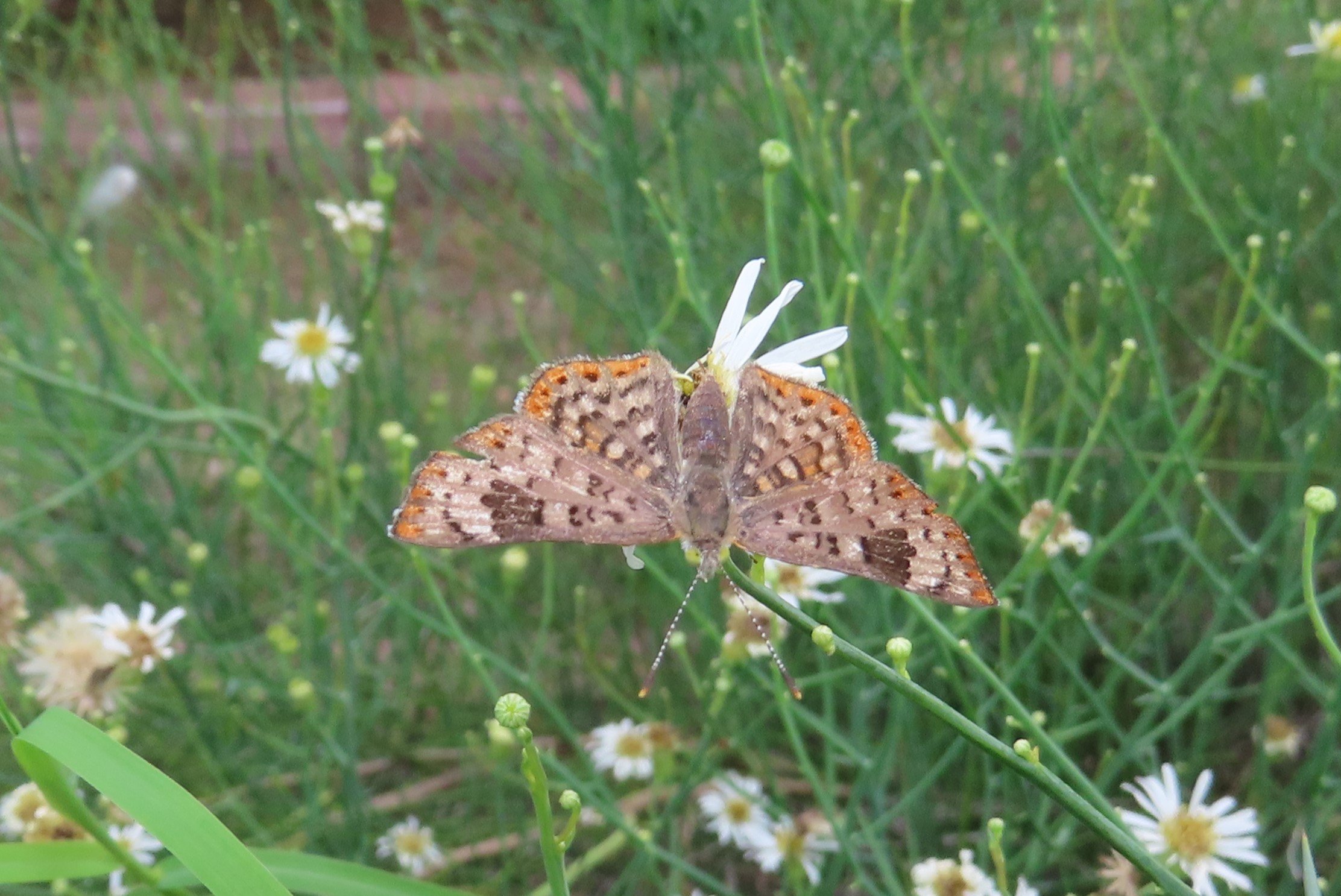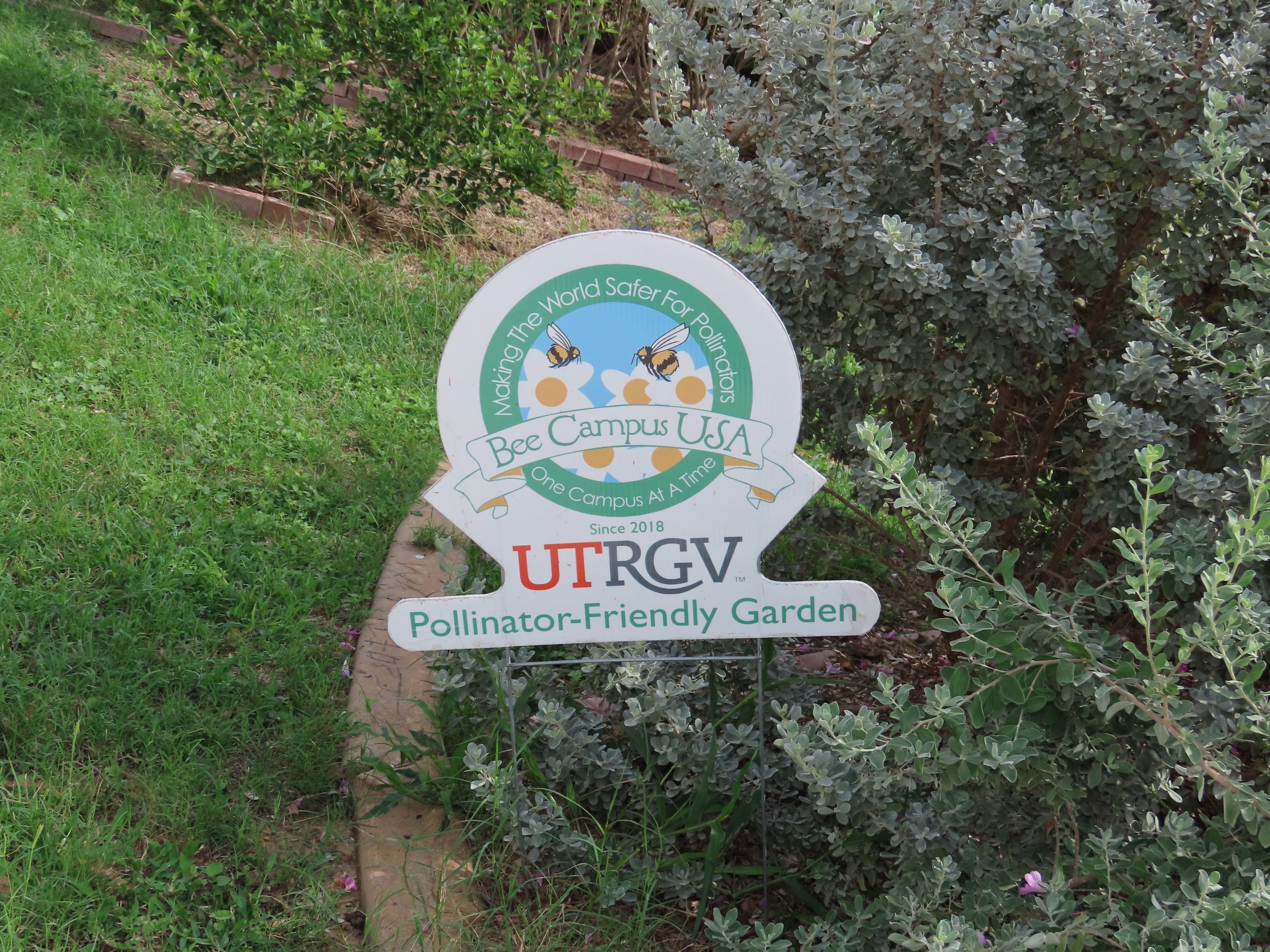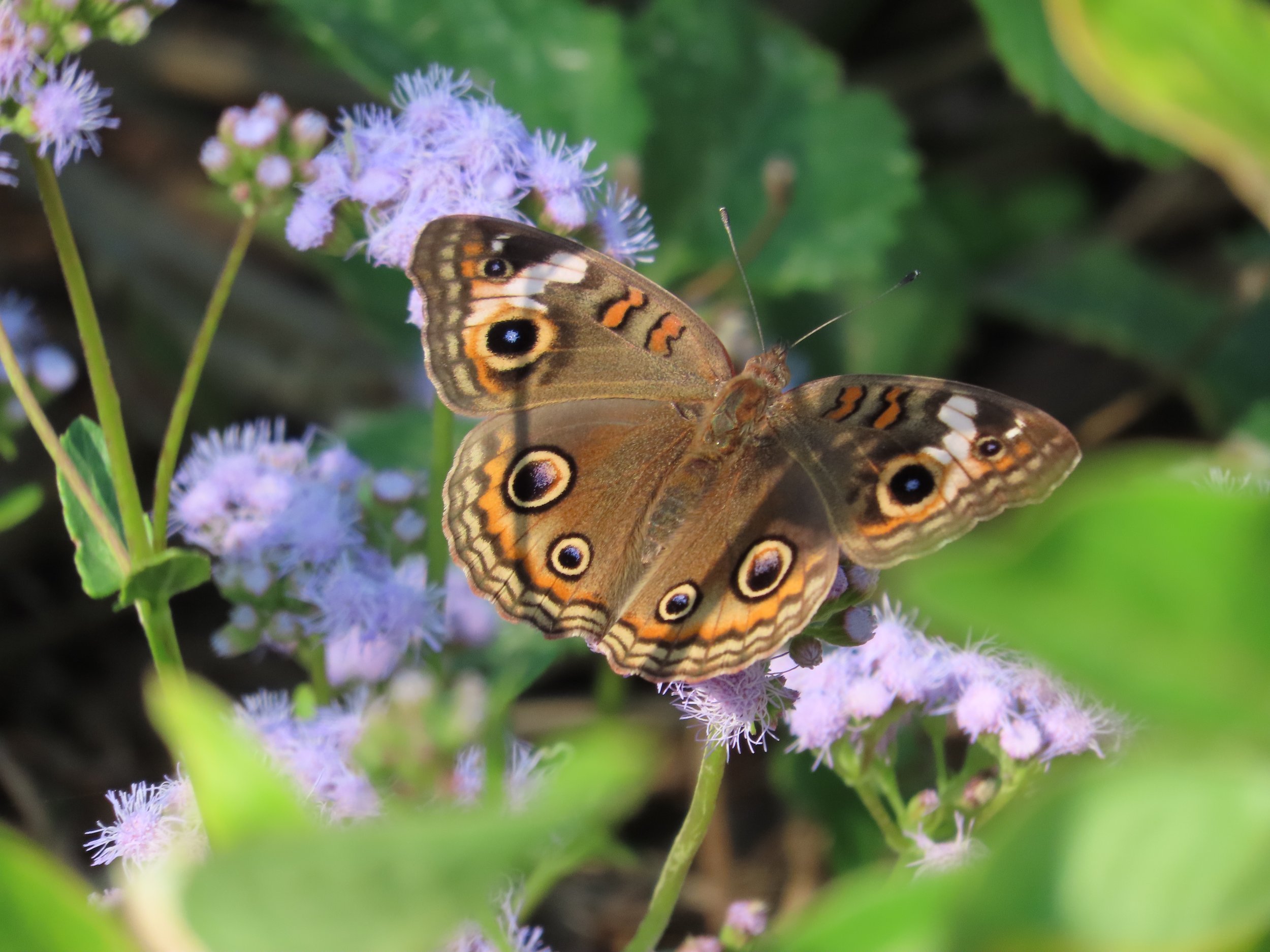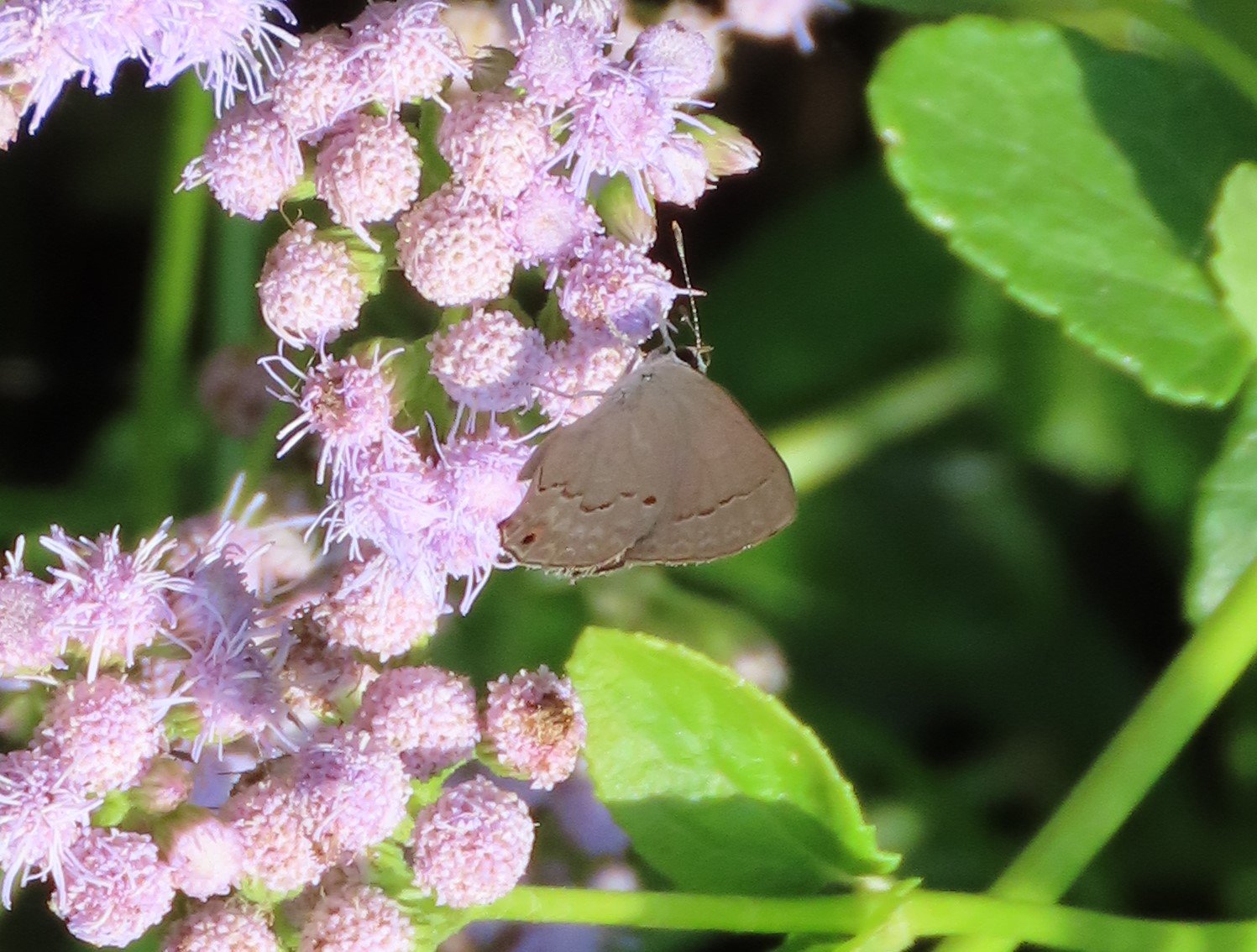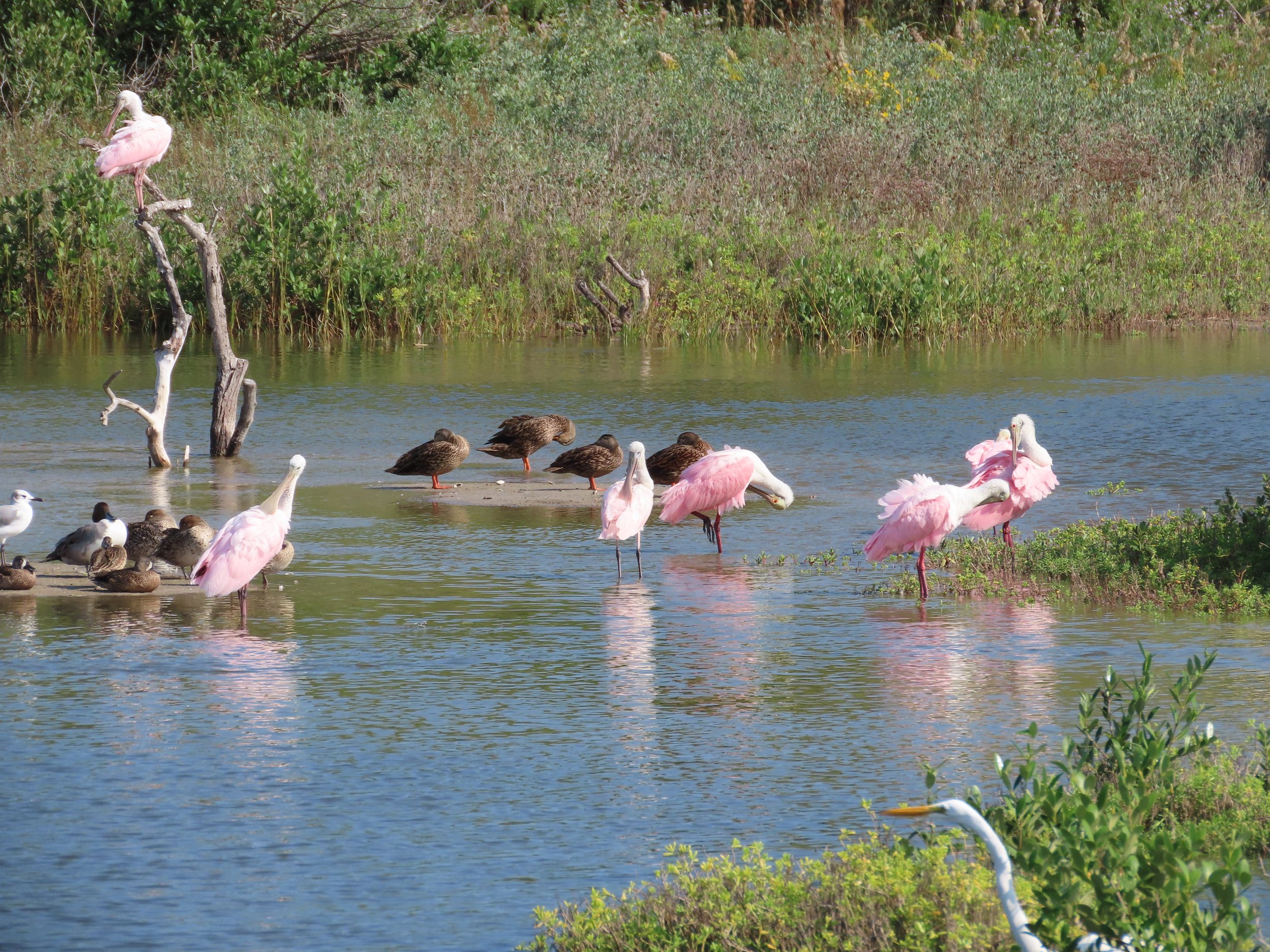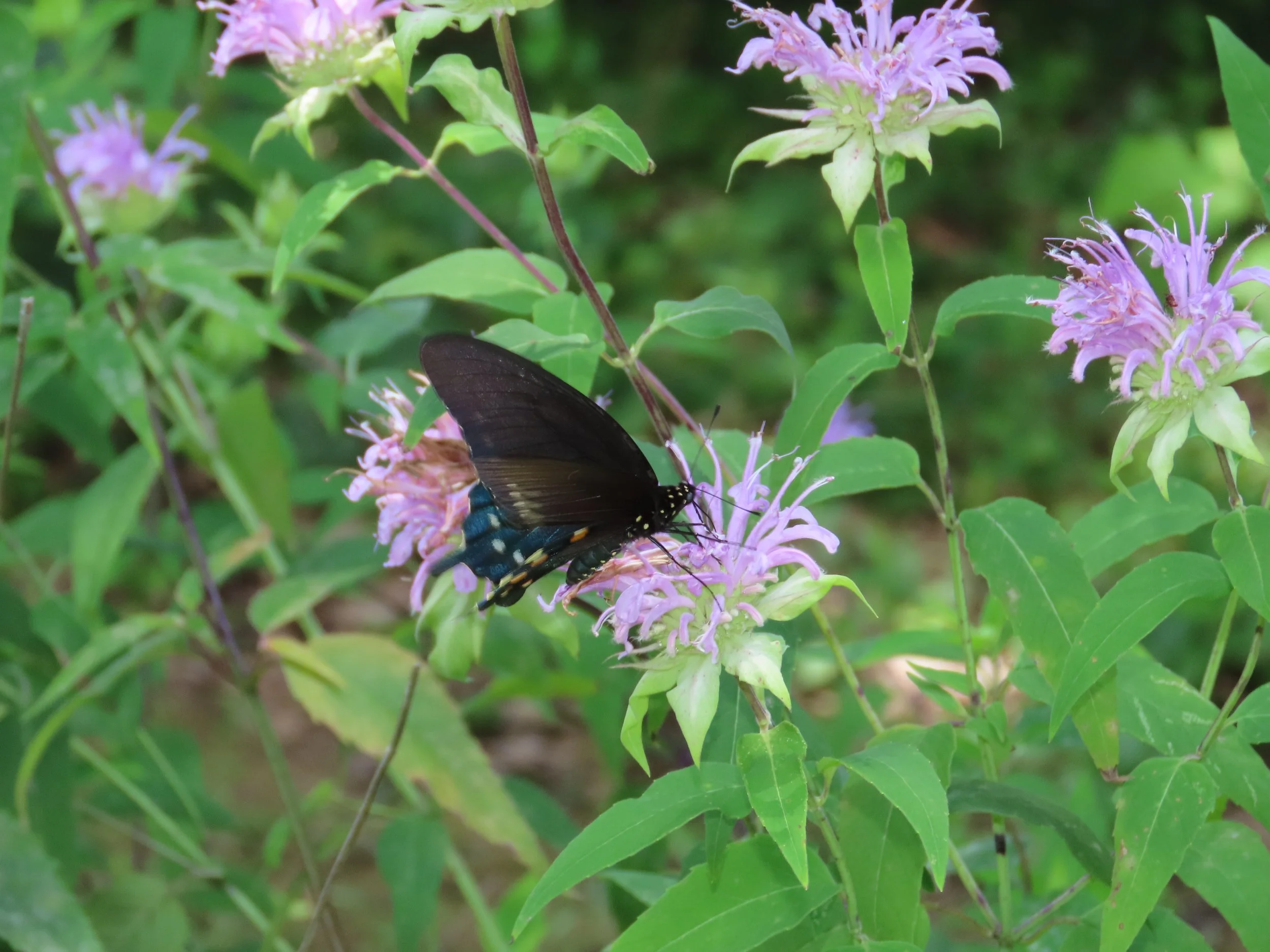Butterfly Tour of Arizona and South Texas (Part Two: Texas)
/The Edinburgh Nature Center, a part of the World Birding Center, was my first stop upon arriving in South Texas. The Red-Bordered Metalmarks, which are normally a rare find, were quite thick. From left to right, Top Row: Dusky-Blue Groundstreak, Zebra Longwing, White-Patched Skipper, White Peacock. Row 2: Turk’s Cap White Skipper, Tropical Checkered Skipper, Sicklewing Skipper, Red-Bordered Metalmark. Row 3: Mournful Duskywing, Lyside Sulphur (left) and Little Yellow (right), Large Orange Sulphur, Gulf Fritillary. Row 4: Brown Longtail.
One of the Holy Grail species that butterfly hunters hope for while in South Texas is Red-bordered Pixie. McAllen Nature Center did not disappoint. Top Row: Ceraunus Blue, Laviana White Skipper, Mallow Scrub Hairstreak, Phaon Crescent. Row 2: Red-bordered Pixie, Southern Broken Dash, Vesta Crescent, Whirlabout.
My trip to Falcon Lake State Park, west of Roma, TX, started unusually. Fog had settled across much of the Rio Grande Valley and was slow to burn-off. Upon my arrival, the skies were very much overcast and stayed that way until close to noon. Thankfully, I talked myself into waiting out the fog. Most of the insects pictured above, with the exception of the wasp moth, were taken in the afternoon after the overcast had cleared. Left to right, Top Row: Texas Wasp Moth, Checkered White, Giant White, Gold-spotted Aguna. Row 2: Longtail Skipper, Red Admiral (completing the Vanessa quadfecta for the trip), Theona Checkerspot.
Several trips were made to the National Butterfly Center in Mission, TX. NBC was the model that Butterfly Ridge is built upon, although I think BR takes education and outreach to the next level. At NBC I documented two more of the Holy Grail species, Mexican Bluewing and Guava Skipper. Top Row: Carolina Satyr, Clytie Ministreak, Common Mestra, Curve-winged Metalmark (a Lifer species for me). Row Two: Guava Skipper, Lantana Scrub Hairstreak, Mexican Bluewing, Mexican Fritillary. Row Three: Soldier, Southern Skipperling, Teleus Longtail, an overabundance of various Emperor species on bait! Row Four: Question Mark.
Resaca de la Palma State Park near Brownsville, TX is the go-to location for Blue Metalmark, and in that regard it did not disappoint. Blue Metalmark is another of the Holy Grail species for any trip to South Texas. And while I had heard reports that Resaca had lost its splendor, I was quite pleased with my findings there. While hunting for butterflies I have run across many things: scary dogs, rattlesnakes, Border Patrol, etc; but this was my first armadillo while lepping! Top Row: Mexican Bluewing, Common Mellana, Dorantes Longtail, Great Southern White (those awesome turquoise antenna tips!). Second Row: White-striped Longtail, Armadillo!
I rarely go to a location in search of a single species, but I made a trip to the University of Texas Rio Grande Valley @ Brownsville for precisely that reason. Friend Javi Gonzalez had told me that the very rare Walker’s Metalmark had been observed at the UTRGVB pollinator garden, so I went in search of. Not only is UTRGVB the southern-most university in the U.S., it is the southern most anything in the U.S., as Mexico forms the south boundary of the school. And Walker’s Metalmark was precisely where is was supposed be, along with a wonderfully green Silver-banded Hairstreak!
My final stop in South Texas was the San Pedro Island World Birding Center. While I am not a birder at all, I had heard that they have some wonderful butterfly gardens, so I wanted to check those out. Although, these big pink birds (Roseate Spoonbills) were sort of hard to miss! From left: Mangrove Buckeye, Red-crescent Scrub Hairstreak, Roseate Spoonbills.
For the trip I recorded 92 species, including nine Lifer species. Not all 92 species are shown here. While some of those documenting photos are good enough for identification purposes, they are nowhere near ready for primetime.


